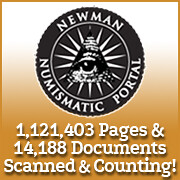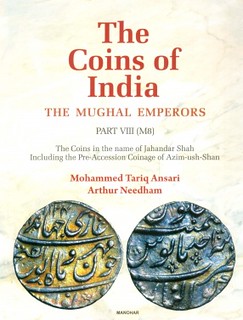
About UsThe Numismatic Bibliomania Society is a non-profit organization devoted to the study and enjoyment of numismatic literature. For more information please see our web site at coinbooks.org SubscriptionsThose wishing to become new E-Sylum subscribers (or wishing to Unsubscribe) can go to the following web page link MembershipThere is a membership application available on the web site Membership Application To join, print the application and return it with your check to the address printed on the application. Print/Digital membership is $40 to addresses in the U.S., and $60 elsewhere. A digital-only membership is available for $25. For those without web access, write to: Terry White, Treasurer AsylumFor Asylum mailing address changes and other membership questions, contact Terry at this email address: terrywhite5475@yahoo.com SubmissionsTo submit items for publication in The E-Sylum, just Reply to this message, or write to the Editor at this address: whomren@gmail.com
BUY THE BOOK BEFORE THE COIN |
- WAYNE'S WORDS: THE E-SYLUM AUGUST 2, 2017
- NBS EVENTS AT THE 2017 DENVER ANA
- RARE COL. GREEN NUMISMATIC LITERATURE OFFERED
- NEW BOOK: BUFFALO AND JEFFERSON NICKELS, 2ND ED.
- NEW FEATURE: MEGA RED ENGRAVED LOVE TOKENS
- NEW BOOK: PHILIPPINE MEDALS AND TOKENS 1780-2015
- NEW BOOK: TAIWAN'S TOKENS
- NEW BOOK: THE COINS OF INDIA, MUGHAL EMPERORS
- NEW BOOK: SATAVAHANA COINS
- BOOK REVIEW: THE GOLD INDIANS OF BELA LYON PRATT
- NEWMAN BIOGRAPHY ADDS TO PAN'S BURNS LIBRARY
- LEON HENDRICKSON (1926-2017)
- MINT DIRECTOR’S ACCOUNT BOOK, 1855-1868
- A LIST OF COIN FORUM WEB SITES
- U.S. MINT HUBBING DIES IN 1793
- MEET WHITMAN AUTHORS AT THE 2017 DENVER ANA
- MORE 2017 DENVER ANA CONVENTION EVENTS
- LESHER DOLLAR COLLECTION EXHIBIT
- DUNHAM'S 1913 LIBERTY NICKEL?
- NOTES FROM E-SYLUM READERS: JULY 30, 2017
- SELL YOUR DUPLICATES, GROW THE HOBBY
- LOCAL COVERAGE OF 2017 DENVER ANA CONVENTION
- VOCABULARY TERM: RECOINAGE
- WILLIAM CARLOS STONE (1859-1939)
- DONATING THE JOSIAH K. LILLY COLLECTION
- HARVEY STACK ON BLOGGING NUMISMATIC HISTORY
- QUERY: CHORMANN PATTERN INFORMATION SOUGHT
- MORE ON AMERICA'S FIRST GOLD RUSH EXHIBIT
- NUMISMATIC NUGGETS: JULY 30, 2017
- LINCOLN CENT SCULPT NOT IN MEDALLIC ART'S VAULT
- ROMAN BOLDRE HOARD GOES ON DISPLAY
- 2017 FALKLAND ISLANDS LIBERATION CROWN
- ABERDEEN MUSEUM DISPLAYS MILITARY CROSS MEDAL
- DICKIN MEDAL WINNER PADDY THE PIGEON
- BIG MAPLE LEAF BELIEVED MELTED
- SWEDEN'S STAR FOOTBALLER NOW ON "BANKNOTE"
- BOY SCOUTS UNEARTH BURIED TREASURE
- WINDOW OF OPPORTUNITY: LINCOLN CENT DEAL
Click here to access the complete archive
To comment or submit articles, reply to whomren@gmail.com
Content presented in The E-Sylum is not necessarily researched or independently fact-checked, and views expressed do not necessarily represent those of the Numismatic Bibliomania Society.
WAYNE'S WORDS: THE E-SYLUM AUGUST 2, 2017
This week we open with NBS events at the Denver ANA convention, some rare and important numismatic literature, six new books and one review.
Other topics this week include Taiwan's tokens, Philippine medals and tokens, coin forum web sites, hubbing dies, Lesher dollar exhibits, the Chormann patterns, the J. K. Lilly collection, and the fate of the stolen "Big Maple Leaf."
To learn more about Colonel E.H.R. Green, F.C.C. Boyd, Eric P. Newman, Leon Hendrickson, the Ballantine Beer Spinner, recoinage, the Falkland Islands Liberation Crown, Paddy the Pigeon, and William Dunham's 1913 Liberty Nickel, read on. Have a great week, everyone!
Wayne Homren
Editor, The E-Sylum
NBS EVENTS AT THE 2017 DENVER ANA
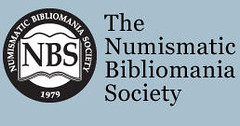
If you are planning to attend this year’s ANA Convention in Denver, I would like to extend an invitation to join your fellow bibliophiles at the NBS-sponsored events.
NBS Symposium: August 3rd, 1pm
This year’s Symposium will feature well-known scholar, researcher and author Neil Musante’s presentation on his marvelous book Medallic Washington. The Symposium will be held Thursday, August 3, at 1:00 in Room 407.
NBS General Meeting: August 4th, 11:30am
We will conduct our annual General Meeting of the NBS on Friday, August 4, at 11:30 in Room 112. Highlights of the meeting include the author awards for articles appearing in The Asylum and our annual fund-raising auction. The auction is always a fun opportunity to support the efforts of the NBS and it always offers a surprise or two.
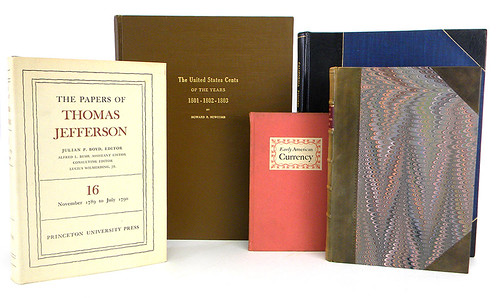
You can download a PDF of the catalogue here:
http://www.coinbooks.org/NBS%20Auction%202017.pdf
These events are not only a great way to champion the mission of the NBS, but also provide an opportunity to meet other numismatic bibliophiles who share our mania. We hope you will be able to join us in The Mile High City.
For more information about NBS, see:
http://www.coinbooks.org/
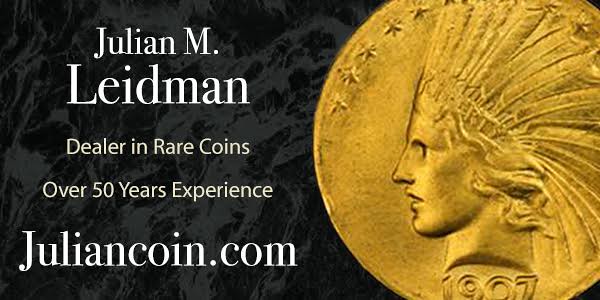
RARE COL. GREEN NUMISMATIC LITERATURE OFFERED
In partnership with Kolbe & Fanning Numismatic Booksellers, Stack's Bowers Galleries is pleased to showcase Numismatic Literature relating to the magnificent collection of Colonel E.H.R. Green as part of their August 2017 Official Auction of the ANA World's Fair of Money in Denver, Colorado. This group of seven lots will be offered in Session I, commencing at 5:00 PM on August 1, 2017.
Offered are books, inventories and appraisals, including F.C.C. Boyd's extensive original appraisal of the Colonel E.H.R. Green Collection and the famous photographic record of Colonel Green's collections of United States quarter eagles, half eagles and eagles—a three-volume set of great rarity. In addition to their connection with Colonel E.H.R. Green, the items feature associations to important numismatic figures like M.L. Beistle, F.C.C. Boyd, Waldo Newcomer, and Morton Stack. These are historic volumes of superb research value and all were once in the libraries of either the Stack family or John J. Ford, Jr. A unique opportunity for the numismatic literature collector!
The seven numismatic literature items featured in this email were acquired for their specific association with Colonel E.H.R. Green, a numismatic character of particular interest to collectors. Green was not only one of the great collectors of the 20th-century, but he was also a man with a fascinating back story who lived a colorful life. Some brief biographical notes are included in the sale catalogue, but like many famous numismatists, his story is worthy of further exploration.
Lot 67: F.C.C. Boyd's Original Appraisal
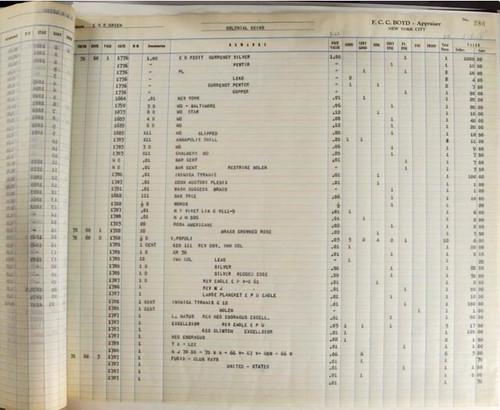
A Contemporary Record of one of the Greatest American Collections
[Green, Colonel Edward Howland Robinson]. Boyd, F.C.C. Appraisal of the Colonel E.H.R. Green Estate Collection of Coins, Medals & Tokens, and Paper Money. New York City. F.C.C Boyd, Appraiser, (1937).
Original red cloth-backed stiff brown card covers. 35.5 by 45.5 cm. (2), 442 leaves of original carbon typescript on pre-printed sheets, ruled in blue, with pencil computations. Front and back covers neatly detached, otherwise Fine with all interior pages intact. Of the highest importance as a contemporary record of one of the greatest American collections, accomplished by another of the greatest collectors of the early 20th Century.
The son of financier Hetty Green, popularly known as the "Witch of Wall Street," Colonel E.H.R. ("Ned") Green (1868-1936) spent astonishing sums in the 1920s and 1930s on his hobbies. Arthur H. Lewis's biography of Green, The Day They Shook the Plum Tree, tells the remarkable story of the miserly mother and her profligate son, who, upon Hetty's death in 1916, indulged his enormous appetite for yachts, coins, stamps, jewels, orchids, and exactly the sorts of women one assumes Hetty warned him about at length. The average annual income in the United States in 1916, when Hetty Green died, was a bit over $700; in 1936, when Col. Green died, it was something over $1,700. Lewis estimates that Col. Green spent as much as $3 million a year on his various pastimes. He vies with Egypt's King Farouk as perhaps the most eccentric coin collector of the twentieth century.
To read the complete lot description, see:
F.C.C. Boyd's Extensive Original Appraisal of the Legendary Colonel E.H.R. Green Collection
(https://auctions.stacksbowers.com/lots/view/3-7WC2O)
Lot 68: Photographic Record of Quarter Eagles, Half Eagles, & Eagles
The Fabled Photographic Record of the Colonel Green Collections of United States Quarter Eagles, Half Eagles, & Eagles
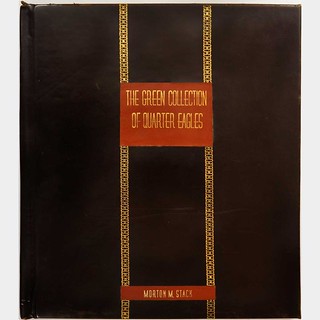 Morton M. Stack's personal set of this monumental photographic record, with his name stamped in gilt on an inset leather label at the base of each front cover. Affixed to the rear pastedowns are the printed labels of B.A. Martin, the official Stack's special edition binder. Colonel Green's remarkable collection of United States gold coins by variety, including many pieces from the famed Waldo Newcomer collection, remains one of the finest ever formed. The three volumes present here posthumously record his front-line collection in each of the series depicted. Taken around the time the coins were sold, in 1943 and 1944, to His Majesty the King of Egypt, these well-produced photographs continue to be extremely significant and particularly important for establishing provenance. A number of Colonel Green / King Farouk coins passed into the hands of John Jay Pittman, Harry W. Bass, Jr., D. Brent Pogue and other major collectors. Only a few copies of each of the above volumes were prepared and, to our knowledge, a complete set has come to auction only twice before.
Morton M. Stack's personal set of this monumental photographic record, with his name stamped in gilt on an inset leather label at the base of each front cover. Affixed to the rear pastedowns are the printed labels of B.A. Martin, the official Stack's special edition binder. Colonel Green's remarkable collection of United States gold coins by variety, including many pieces from the famed Waldo Newcomer collection, remains one of the finest ever formed. The three volumes present here posthumously record his front-line collection in each of the series depicted. Taken around the time the coins were sold, in 1943 and 1944, to His Majesty the King of Egypt, these well-produced photographs continue to be extremely significant and particularly important for establishing provenance. A number of Colonel Green / King Farouk coins passed into the hands of John Jay Pittman, Harry W. Bass, Jr., D. Brent Pogue and other major collectors. Only a few copies of each of the above volumes were prepared and, to our knowledge, a complete set has come to auction only twice before.
To read the complete lot description, see:
[Green, Colonel Edward Howland Robinson]. Three Volume Set of the Photographic Plates of the Famous Green Collections of Quarter Eagles,...
(https://auctions.stacksbowers.com/lots/view/3-7WCNF)
Lot 69: Beistle's Register, Deluxe Leatherbound Edition
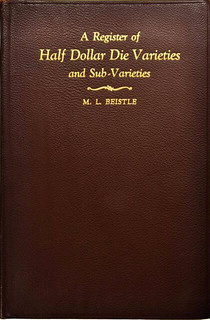 Beistle, M.L. A Register Of Half Dollar Die Varieties and Sub-Varieties. Being a Description of Each Die Variety Used in the Coinage of United States Half Dollars as Far as the Issues are Known, Covering the United States Mint at Philadelphia, and Branches at New Orleans, San Francisco, Carson City and Denver. Shippensburg, 1929.
Beistle, M.L. A Register Of Half Dollar Die Varieties and Sub-Varieties. Being a Description of Each Die Variety Used in the Coinage of United States Half Dollars as Far as the Issues are Known, Covering the United States Mint at Philadelphia, and Branches at New Orleans, San Francisco, Carson City and Denver. Shippensburg, 1929.
8vo, original full brown flexible morocco leather, gilt; all page edges gilt. xxxiii, (1), 261, (1) pages, interleaved; frontispiece portrait of the author, autographed in ink; portrait plate of David Proskey; primer chart; 7 fine photographic plates. Minor damage to front pastedown. Near fine.
No. 1 of only 135 deluxe interleaved copies issued with photographic plates. Inscribed in black ink on the front flyleaf: "To Col. E.H.R. Green, In appreciation of your encouragement which has helped the author make this book more complete and accurate, Sincerely, (signed) M.L. Beistle, Shippensburg, Pa., Sept 20th 1929." Only the deluxe edition featured actual photographic plates, the regular copies including less expensive halftones. Prior to the 1967 publication of the Overton work on early half dollars, Martin Luther Beistle's volume was the primary reference on the subject. Bill Bugert published an article in the January-March 2008 issue of the Numismatic Bibliomania Society's journal, The Asylum, on the publication process of Beistle's work, which was partially underwritten by Col. Green and for which F.C.C. Boyd provided advice on promotion and printing. This is arguably the single most desirable copy of this reference.
To read the complete lot description, see:
Beistle, M.L. A Register Of Half Dollar Die Varieties and Sub-Varieties. Being a Description of Each Die Variety Used in the Coinage of ...
(https://auctions.stacksbowers.com/lots/view/3-7WCN6)
Lot 70: Supplementary Green Estate Appraisal
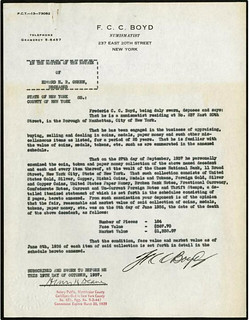 A Supplementary Green Estate Appraisal by F.C.C. Boyd With His Expenses for the Appraisal
A Supplementary Green Estate Appraisal by F.C.C. Boyd With His Expenses for the Appraisal
An interesting supplementary record of this fabled collection, being the appraisal of a part of Green's holdings kept at the Chase National Bank vault in New York (most of the collection was held at the First National Bank in Boston). One hundred eighty-four items, with a face value of $367.70 were assigned a "Market Value" of $1,338.57. It is a rather prosaic accumulation, though including two "Assay Bar[s]" valued at $367.30 and $368.75. The expense sheets are perhaps more interesting, apparently recording the costs involved in an appraisal of the main collection. Headed E.H.R. Green Estate / Contents of Vault 1st Nat Bank Boston Mass. / Re Coins, Medals and Paper Money, they total approximately $1,800. The lion's share went to J. Barnett and J. Wade, who each received $300 "salary" payments on January 24 and January 30. The remainder of the charges appear to be travel expenses incurred by Boyd over a nine-month period.
To read the complete lot description, see:
[Green, Colonel Edward Howland Robinson]. Boyd, F.C.C. Appraisal of Coins Belonging to Col. Green Kept at the Chase National Bank.
(https://auctions.stacksbowers.com/lots/view/3-7WCMU)
Lot 71: Green Collection Inventory Records
 Inventory Records Pertaining to The Colonel E.H.R. Green Collection and its Formation
Inventory Records Pertaining to The Colonel E.H.R. Green Collection and its Formation
[Green, Colonel Edward Howland Robinson]. Estate Records Pertaining to the Col. Green Collection. Typewritten cover title: Estate of Edward H.R. Green. Black Covered Notebook (Notebook Title Elbe 814A.) Contains Three Loose Typewritten Lists of Coins.
A 24-page listing of coins in the Green Collection, formerly in the Waldo Newcomer Collection, titled at the top of the first page, Central & South American Gold Coins Belonging to Waldo Newcomer, Baltimore, Md. This includes many important pieces, including: Argentina 8 Escudos, 1842, fine, Reeded, Excessively Rare; Bolivia, 1834 Potosi, Unc., Serrated, Only known specimen...; Bolivia, 1 Onza, 1868 Potosi, Unc. Br., Lettered, Probably unique. Williams knew it only in silver; Brazil, 1,000 Reis, 1818, Unc., Ornamented; Brazil, 4 Escudos, 1749, O/S, E. Fine, Ornamented, First coin struck at Chilean Mint, exceedingly rare; Chile, 5 Pesos, 1875, Proof, Ornamented, Unique... formerly owned by the Chilean Ambassador at Paris; Costa Rica, 4 Escudos, 1837, R, E. Fine, Reeded, Probably Unique; Mexico, 4 Escudos, O/M, E Fine, Serrated, Schulman says "Only one I have ever seen"; Mexico, 8 Escudos, 1823, Unc, Plain, A very rare Proclamation piece; Porto Rica, 2 Scudos (?), 1747, Fine, Reeded, Gold Proclamation piece; etc.
To read the complete lot description, see:
[Green, Colonel Edward Howland Robinson]. Estate Records Pertaining to the Col. Green Collection.
(https://auctions.stacksbowers.com/lots/view/3-7WCMZ)
Lot 72: Record of Colonel Green's Latin American Gold Coins
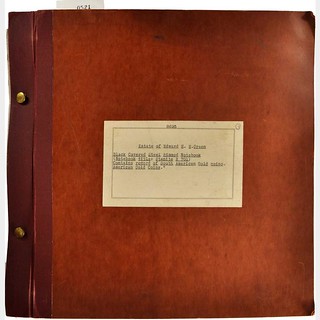 [Green, Colonel Edward Howland Robinson]. Estate Record of Colonel Green's Latin American Gold Coins. Typewritten cover title: Estate of Edward H.R. Green. Black Covered Steel Rimmed Notebook (Notebook Title: Stanite R 701) Contains Record of South American Gold Coins. American Gold Coins.
[Green, Colonel Edward Howland Robinson]. Estate Record of Colonel Green's Latin American Gold Coins. Typewritten cover title: Estate of Edward H.R. Green. Black Covered Steel Rimmed Notebook (Notebook Title: Stanite R 701) Contains Record of South American Gold Coins. American Gold Coins.
A tabular arrangement, recording Col. Green's extensive acquisitions of Latin American gold coins. Organized by country, date, denomination, and mint, each entry comprises the supplier's initials, acquisition date, and cost. A number of pages contain no entries. Dealers listed are WR (Wayte Raymond?), JAK, HC (Henry Chapman?), and RK. Most acquisitions appear to have been made in the 1920s or early 1930s. While the coins themselves are not physically described, numerous rarities appear to be present, and many three figure and occasional four figure prices are recorded. The inventory appears to comprise a complete acquisition record of Green's Mexican, Argentinean, Bolivian, Brazilian, Chilean, Colombian, Costa Rican, Cuban, Ecuadorian, Guatemalan, Haitian, Honduran, Paraguayan, Peruvian, Salvadoran, and Venezuelan gold coins.
To read the complete lot description, see:
[Green, Colonel Edward Howland Robinson]. Estate Record of Colonel Green's Latin American Gold Coins.
(https://auctions.stacksbowers.com/lots/view/3-7WCMN)
Lot 73: Mehl's Offering of Waldo Newcomer's U.S. Gold Coins
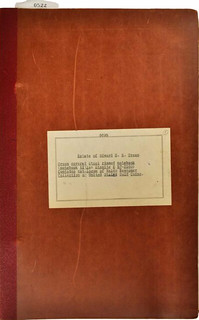 B. Max Mehl's Offering of Waldo Newcomer's U.S. Gold Coins
B. Max Mehl's Offering of Waldo Newcomer's U.S. Gold Coins
Arranged by mints, the remarkable Waldo Newcomer collection, the "most complete collection ... ever brought together" of half eagles and varieties is described in detail; eagles are then similarly listed, followed by quarter eagles, double eagles, "the only complete set in existence" of three dollar pieces (including the famous 1870-S, called "uncirculated" and offered at $2000 by itself), and one dollar pieces. It concludes with a listing of 53 "Individual Prices on Some of the Greater Rarities ... based on recent auction records and records made at private sales" totaling $50,325. Each section of the collection features entertaining if overblown introductory text written by B. Max Mehl, but the descriptions are practically identical to those found in the surviving inventory of the Newcomer collection, and the prices vary but rarely.
Mehl states that "The coins here listed will be sold separately at the prices marked on this list if the collection is not sold as a whole." There does not appear to be a price listed for the entire collection, nor is there any indication when Colonel Green acquired it en bloc. However, certain sections of the offering have summarized prices noted in their introductory texts, an example being the "Complete Set of Denver Mint Half Eagles" which are "Listed at a cost of $37.25 while the face value alone is $35.00."
Almost as interesting as the coin listings themselves is the insight one gets into B. Max Mehl as a marketer and personality. A truly fascinating and historic volume that appeared in Part I of the John J. Ford Reference Library sale in 2004, in what we believe to have been its only public sale until now. It realized an impressive $4,600 those dozen years ago, commensurate with its numismatic historical value and charm.
To read the complete lot description, see:
[Green, Colonel Edward Howland Robinson]. (Mehl, B. Max). Estate Record of United States Gold Coins Derived from the Newcomer Collection...
(https://auctions.stacksbowers.com/lots/view/3-7WC1X)
NEW BOOK: BUFFALO AND JEFFERSON NICKELS, 2ND ED.
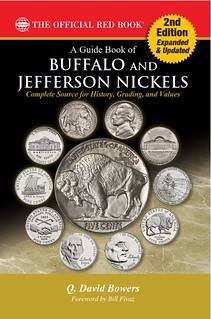 Whitman Publishing announces the release of the new second edition of the Guide Book of Buffalo and Jefferson Nickels, by Q. David Bowers. The 320-page softcover book is available from booksellers and hobby shops nationwide, and online (including at www.Whitman.com), for $19.95. Bowers will autograph copies at the American Numismatic Association World’s Fair of Money, August 1–5, 2017.
Whitman Publishing announces the release of the new second edition of the Guide Book of Buffalo and Jefferson Nickels, by Q. David Bowers. The 320-page softcover book is available from booksellers and hobby shops nationwide, and online (including at www.Whitman.com), for $19.95. Bowers will autograph copies at the American Numismatic Association World’s Fair of Money, August 1–5, 2017.
The book covers America’s two most popular nickel five-cent series—Buffalo nickels, minted from 1913 to 1938, and Jefferson nickels, minted from 1938 to date. Bowers, the nation’s most prolific numismatic author, offers a detailed history as well as advice on smart collecting and a date-by-date analysis of both series. This includes mintages, specifications, strike quality and other technical aspects, market values in multiple grades (including Full Steps for Jefferson nickels), and high-resolution enlargements for important overdates and other die varieties. The text and catalog are illustrated by 941 images, including photographs of every coin by date and mintmark.
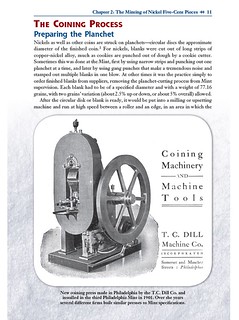
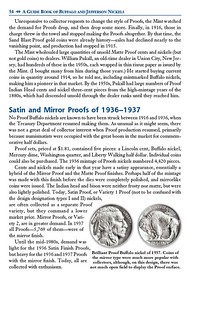
The new edition is more than 10 percent longer than the first, with 32 extra pages of content. It has been updated with many more photographs, expanded coverage of die varieties, new retail market values for each coin, and the latest U.S. Mint data. New illustrated appendices explore Depression-era and modern hobo nickels; James Earle Fraser’s nickel design as used on the American Buffalo 24-karat gold coin series; and “Nickels Here and There” (a study of the nickel in American popular culture). Other appendices explore a chronology of the nickel five-cent piece, Mint errors and misstrikes, and Buffalo nickel patterns.
Numismatic educator and die-variety specialist Bill Fivaz wrote the book’s foreword. He said, “If you have even the slightest interest in Buffalo or Jefferson nickels, this book by Dave Bowers is an absolute must. I guarantee you’ll have fun with these series.”
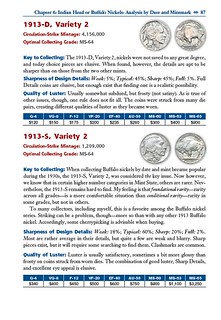
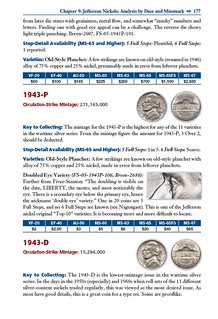
Because Whitman Publishing is the Official Supplier of the American Numismatic Association, ANA members receive 10 percent off their direct purchases. The book can also be borrowed for free as a benefit of membership in the ANA, through the Dwight N. Manley Numismatic Library.
A Guide Book of Buffalo and Jefferson Nickels, second edition
By Q. David Bowers; foreword by Bill Fivaz
ISBN 0794845223
Softcover, 6 x 9 inches, 320 pages, full color
Retail $19.95 U.S.
For more information, or to order:
https://www.whitman.com/store/Inventory/Detail/A-Guide-Book-of-Buffalo-and-Jefferson-Nickels-2nd-Edition+0794845223
NEW FEATURE: MEGA RED ENGRAVED LOVE TOKENS
 The third edition of MEGA RED (the Deluxe Edition of the Guide Book of United States Coins) features different types of altered coins in several new appendices, including an eight-page illustrated study of love tokens. MEGA RED retails for $49.95 and is available online (including at Whitman.com) and from booksellers nationwide.
The third edition of MEGA RED (the Deluxe Edition of the Guide Book of United States Coins) features different types of altered coins in several new appendices, including an eight-page illustrated study of love tokens. MEGA RED retails for $49.95 and is available online (including at Whitman.com) and from booksellers nationwide.
A love token is defined as a coin that has been smoothed flat on one or both sides and then hand-engraved, usually with a keepsake message for a sweetheart or family member. Typical messages included terms of endearment, anniversary dates, a lover’s initials, or a romantic symbol such as a heart, blue birds, or flowers.
The MEGA RED appendix is illustrated with photographs of more than 100 love tokens and related items, ranging from tiny half dimes and gold dollars to silver dollars and gold double eagles ($20 coins).
The popular tradition of engraving coins for sentimental or good-luck purposes goes back to Great Britain in the late 1600s. In the United States, the most commonly seen are Liberty Seated dimes (minted from the 1830s to the 1890s). Love tokens saw a resurgence in popularity during World War II, when women on the Home Front would wear “sweetheart jewelry” to honor their loved ones fighting overseas. Many examples were in the form of necklaces or bracelets of foreign coins engraved by soldiers and sailors, with silver coins of Australia being most common.
Because each love token is unique, retail values are difficult to standardize. To aid collectors, the MEGA RED appendix illustrates a catalog of pieces sold at auction in recent years, along with their auction prices. Examples include Liberty Seated and Morgan silver dollars, trade dollars, an Australian sweetheart bracelet, silver quarters and half dollars, foreign and U.S. gold coins, a Barber dime marking the death of President William McKinley, twenty-cent pieces, stick pins made from gold dollars, a so-called opium dollar, and more.
Other appendices in the third-edition MEGA RED discuss special modern gold coins (2009 to date), So-Called Dollars, hobo nickels, chopmarked coins, and modern U.S. Mint gold and silver medals.
MEGA RED: A Guide Book of United States Coins, Deluxe Edition, 3rd edition
ISBN 0794845096
1,054 pages, full color
By R.S. Yeoman; senior editor Kenneth Bressett; research editor Q. David Bowers;
valuations editor Jeff Garrett
$49.95 retail
About MEGA RED
Billed as the “biggest, most useful Red Book ever,” MEGA RED measures 7 x 10 inches and has 1,040 more pages than the regular edition. The larger size and increased page count combined make MEGA RED five times bigger than the regular-edition Red Book. It prices 8,200 items in up to 13 grades each, with 48,000 individual values and 15,400 auction records covering circulated, Mint State, and Proof coinage. The book is illustrated with 7,000 images, including 2,434 that are new to the third edition.
The third edition of MEGA RED officially debuted at the Whitman Coin and Collectibles Baltimore Expo, March 30, 2017, and now is available nationwide. MEGA RED retails for $49.95 and is available online (including at Whitman.com) and from booksellers and hobby shops nationwide. Whitman Publishing is the Official Supplier of the ANA, and Association members receive a 10% discount off all purchases.

NEW BOOK: PHILIPPINE MEDALS AND TOKENS 1780-2015
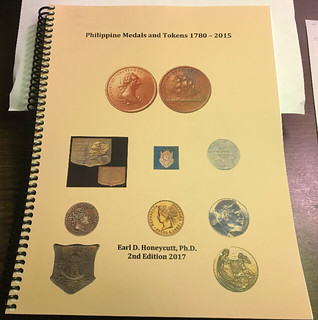 The 2nd edition of "Philippine Medals and Tokens 1780-2015" was just released. The 2nd edition is greatly expanded with more than 500 new medals & tokens, plus most listings in the book have improved photos. The 2nd edition is 220 pages long.
The 2nd edition of "Philippine Medals and Tokens 1780-2015" was just released. The 2nd edition is greatly expanded with more than 500 new medals & tokens, plus most listings in the book have improved photos. The 2nd edition is 220 pages long.
Much awaited and hot off the press 2017, the 2nd edition of "Philippine Medals and Tokens 1780-2015," consists of the following sections: Introduction (i-v), Spanish Era, US Colonial and Commonwealth Periods, Japanese Period, 1946 Republic, Marcos Era, People Power to present day, Undated medal section, Tokens both Early and Modern, Jetons, and Amulets.
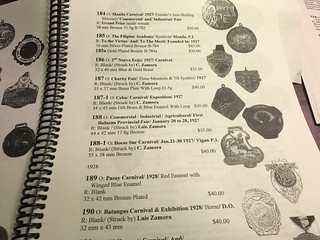 The medal listing includes over 500 new medals over the 1st edition and numbers 202 pages. Sections have been added with advertisements and postcards regarding Philippine Carnivals, an expanded PCF slab section, and a listing of current Philippine dealers of Philippine numismatics.
The medal listing includes over 500 new medals over the 1st edition and numbers 202 pages. Sections have been added with advertisements and postcards regarding Philippine Carnivals, an expanded PCF slab section, and a listing of current Philippine dealers of Philippine numismatics.
Collectors in the continental U.S. wanting to purchase this new book can send US$60.00 to include S/H to:
Earl Honeycutt
226 Edgewater Circle
Chapel Hill, NC 27516
To read the earlier E-Sylum articles, see:
NEW BOOK: PHILIPPINES MEDALS AND TOKENS 1780-2010
(http://www.coinbooks.org/esylum_v17n13a02.html)
BOOK REVIEW: PHILIPPINE MEDALS AND TOKENS, 1780-2010
(http://www.coinbooks.org/esylum_v17n17a07.html)
NEW BOOK: TAIWAN'S TOKENS
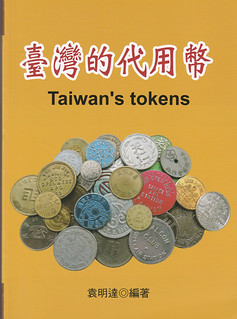 臺灣的代用幣 : Taiwan’s tokens[sic].
臺灣的代用幣 : Taiwan’s tokens[sic].
By 袁明達 ; YUAN Mingda. Taibei shi : by the author, 2016.
ISBN 978-986-94062- 0-8. Soft cover, 207 pages, color photographs. Price : 600NTD(1).
Although Taiwan has a long-established history of numismatic scholarship, I have been unable to find any domestically researched or published information about Taiwanese tokens, other than the odd listing in an East Asian auction catalogue.
That paragraph was written in September, 2016, as I was preparing an article on the chronology of Taiwanese tokens. Three months later, the Taiwan token-collecting community was surprised and delighted by the publication of YUAN Mingda’s Taiwan’s tokens[sic].
This book publishes the token collection that Yuan has dedicated more than twenty years to build, and it provides the distilled research findings that he has managed to ferret out from various corners during the same time frame. Paging through this volume is equivalent to taking a voyage through the erstwhile uncharted waters of Taiwan tokens, and with Yuan at the helm, a uniquely informative journey ensues.
Yuan archives nearly 700 Taiwan tokens – metal, plastic and paper – in a quarto-sized tome, printed on glossy paper, and divided into nine main headings. I list these because their format and composition may vary from the chapter titles usually encountered in the west. They include: 1) United States military; 2) the public sector, comprised of public park, telephone, transportation and government-issued tokens; 3) children’s playgrounds; 4) department stores; 5) zoos; 6) amusement parks; 7) hotels; 8) industrial enterprises, which encompasses banking, cruise ship, bowling alley, golf and batting range, and restaurant tokens; and 9) early video arcade tokens. These are followed by three pages of early Republic tokens, with an emphasis on Shanghai; seven pages of miscellaneous world tokens; and four pages of Taiwanese paper tokens.
For more information on the Token and Medal Society, see:
http://www.tokenandmedal.org/
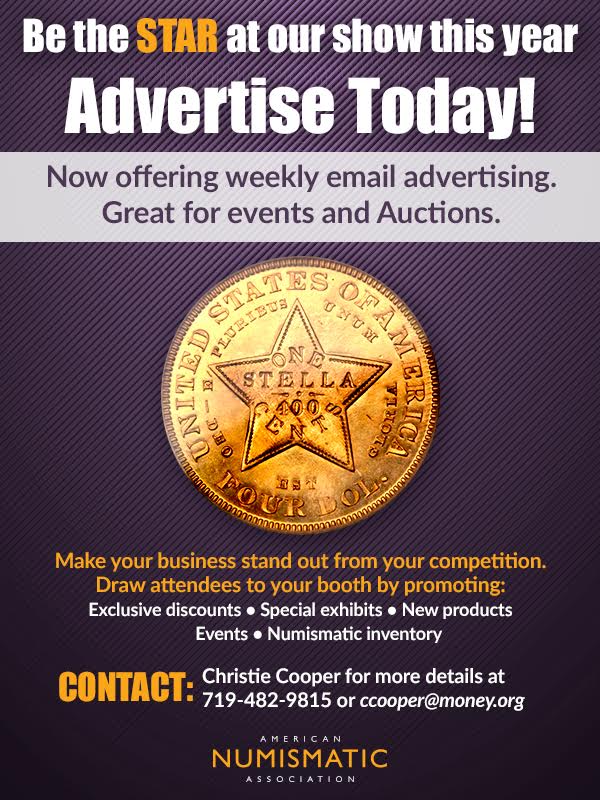
NEW BOOK: THE COINS OF INDIA, MUGHAL EMPERORS
This is the second book in our series of publications on the Coins of India. Like the earlier volume this work also presents a generational change in the method of recording. illustrating and presenting numismatic data on the coins. In the first book only the silver coins of Shah Alam I Bahadur were included but in this volume on Jahandar Shah, his coins in all three metais-good, silver and copper have been included. Pre-accession coinage of Azim-ush-Shan, who lost out the battle for succession to Jahandar is also included in the book.
The legends on the coins and couplets have been illustrated in full colour corfing. The separate sections of the coin inscriptions are clearly defined and colour coded by illustrating the individual coins - both obverse and reverse. This makes learning and understanding the calligraphic inscriptions on the coins very simple. Short histories of all the emperors and other coin issuers have been included.In this work more mint maps have been provided than in the previous volume. Changes in types and styles of the coins have been recorded carefully. The knowledge of the secrets heid in these inscriptions, i.e. dates, mint, ruler's name, etc., is unlocked for all and is very easy to follow. The volume will be immense help to coin collectors, dealers, researchers, scholars, students of numismatics and South Asian History.
Authors (s): Mohammed Tariq Ansari (Author) , Arthur Needham (Author)
Format: Hardcover
ISBN-13: 9789350981825
Pages: 358p., Illustrations; Colour; Maps; Colour; 25cm.
Pub. date: 22.07.2017, 1st. ed.
Publisher: Manohar Publishers & Distributors
Language (s): English
Bagchee ID: BB109055
List price: US $ 260,00
Bagchee price: US $ 234,00
To read the complete article, see:
The Coins of India: The Mughal Emperors, Part VIII (M8)
(http://www.bagchee.com/books/BB109055/the-coins-of-india-the-mughal-emperors-part-viii-m8)
NEW BOOK: SATAVAHANA COINS
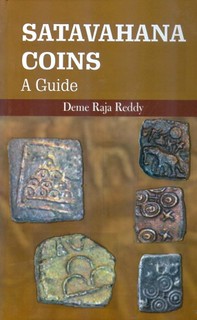 Satavahana was one of the most illustrious dynasties of ancient India who according to 'puranas' ruled over the Deccan and central India after the Mauryas, Sungas and Kanvas. It was indeed an indigenous dynasty that started from the Kotalingala on the banks of River Godavri in Telangana and revived the Vedic Indian culture. Stavahanas left behind great works of art such as those at famous Sanchi and Amaravati 'stupas' and rock cut temples in western India. During their long rule Satavahana dynasty provided peace, prosperity through foreign trade and they partronized a kind of art which flourished for many centuries that spread to other countries such as Sri Lanka and south-east Asia. Hence it was no surprise that Satavahana period is listed as one of the two periods of peace and prosperity in 5000-year history of India.
Satavahana was one of the most illustrious dynasties of ancient India who according to 'puranas' ruled over the Deccan and central India after the Mauryas, Sungas and Kanvas. It was indeed an indigenous dynasty that started from the Kotalingala on the banks of River Godavri in Telangana and revived the Vedic Indian culture. Stavahanas left behind great works of art such as those at famous Sanchi and Amaravati 'stupas' and rock cut temples in western India. During their long rule Satavahana dynasty provided peace, prosperity through foreign trade and they partronized a kind of art which flourished for many centuries that spread to other countries such as Sri Lanka and south-east Asia. Hence it was no surprise that Satavahana period is listed as one of the two periods of peace and prosperity in 5000-year history of India.
Stavahanas issued coins made of copper, lead, point and silver. The language of Satavahana coins was Prakrit exceot for the reverse side of the rare silver coins was ancient Telugu. The script of the coins was Brahmi of the period. This book is a guide which helps in deciphering the legends on Satavahana coins and helps in identification of the coins of the individuals Satavahana rulers.
Authors (s): Deme Raja Reddy (Author)
Format: Hardcover
ISBN-10: 9386223287
ISBN-13: 9789386223289
Pages: x+66p., Ills; Partly Col; Maps; 23cm.
Pub. date: 03.07.2017, 1st.ed.
Publisher: B. R. Publishing Corporation
Language (s): English
Bagchee ID: BB108753
List price: US $ 55,00
Bagchee price: US $ 49,50
To read the complete article, see:
Satavahana Coins: A Guide
(http://www.bagchee.com/books/BB108753/satavahana-coins-a-guide)
BOOK REVIEW: THE GOLD INDIANS OF BELA LYON PRATT
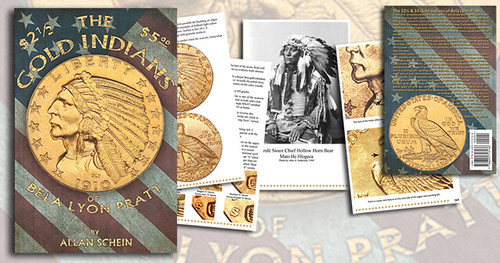
How often do you read a numismatic book outside of the fields you actively collect?
Some hobbyists stick to their favorite subjects—if they collect Morgan dollars, they read books about Morgan dollars, and don’t stray very far into Buffalo nickels, commemoratives, world coins, or medals and tokens.
Many other hobbyists are like numismatic sponges, happy to absorb as much knowledge as they can from all directions. We see this at Whitman Publishing all the time. Some collectors have favorite authors and would buy a Ken Bressett book whether it’s about U.S. paper currency, English coins, or money used in Biblical times. Some are completists—for example, once they start collecting the volumes in the Bowers Series (two dozen and counting) or the “100 Greatest” lineup, they have to fill the holes in their bookshelf just as they would in a Whitman blue folder of Wheat cents. Many others simply love the history, the artistry, the drama, and all the other factors that make coins so interesting. A book on counterstamped large cents or on Mexican silver pesos fires their imagination even if they’ve never bought one or even seen one in person.
Speaking from my own experience as an author, I’m pleased that collectors of modern coins and medals enjoy my book American Gold and Silver: U.S. Mint Collector and Investor Coins and Medals, Bicentennial to Date. But it’s especially gratifying to hear people say they’d never had any interest in such-and-such a series—or maybe hadn’t even heard of it—but now, thanks to my book, they’re starting a new collection. (One of the pleasant “dangers” of the coin bug is that it mutates into new forms if you give it half a chance!)
There’s a book about Indian Head gold coins that deserves a place on your shelf even if you don’t actively collect early-1900s quarter eagles and half eagles. (And if you do, or you’re thinking about it, then you definitely need this book.) Allan Schein’s The Gold Indians of Bela Lyon Pratt is a volume for everyone who loves American history and art.
In this 416-page book, numismatist Schein has crafted a compelling narrative and wrapped it in a blanket of rich historical imagery and excellent coin photography. The Gold Indians of Bela Lyon Pratt can be read as a history book or as a coin-collecting guide, or as both. It breaks new ground in each presentation.
Since reading this book I’ve used the life story of Bela Lyon Pratt as an encouraging lesson for young artist friends who have moments of self-doubt. In the early 1890s, Pratt was striving to build his reputation as a sculptor and to earn the praise of his teachers, including the legendary Augustus Saint-Gaudens. He was working so hard in December 1892 that he forgot his own 25th birthday until he was writing letters home. He shared his worries with his mother: “At least a third of my life is gone.” He admitted to feeling old and tired. We can hear his disappointment in his current state and his anxiety about the future: “I hope to be able to give a better account of the next 25 years if they should be granted me.” In reality, at age 25 Pratt’s life was not just a third gone—it was more than half over. He would die of heart disease in 1917, a few months before his 50th birthday. The moral is twofold: “Don’t lose faith in your own abilities” (Pratt emerged from his self-doubt to build a remarkably successful career) and also “Get to work!” (he succeeded not only through his artistic gifts but also through dogged perseverance and constant labor). In another angle to his historical narrative, Schein tackles the ever-popular question, “Where do coin designers get their portrait models?” This is a topic of perennial interest to collectors. Was the Indian on the Buffalo nickel a composite, or an individual? Was the “buffalo” modeled after Black Diamond, an American bison from the Central Park Zoo? Did James Longacre put his daughter on the Indian Head cent, and Anthony de Francisci his wife on the Peace dollar? Is a schoolteacher on the Morgan dollar and an actress on the Mercury dime?
Opinions often take the place of facts in cases where the designers didn’t specifically name their models, or if their own accounts changed or were confused over the years. Factual errors, once put into print, have a habit of being picked up and repeated by later researchers and writers. For the identity of the Native American on the Indian Head gold coins, Schein pored through Pratt family photographs, read the artist’s hundreds of letters, and examined receipts and other primary sources to piece together the identity. This allowed him to dispel generations of erroneous information repeated from one numismatic article or book to another.
As a publisher, I always like to see books that successfully bridge the gap between “mainstream” American history and numismatics. Allan Schein has artfully made that connection with The Gold Indians of Bela Lyon Pratt. His book deserves a place on your shelf whether you actively collect these fascinating coins or are simply interested in the wondrous world that’s wrapped up in American numismatics.
To order on eBay: http://www.ebay.com/itm/The-2-50-5-Gold-Indians-of-Bela-Lyon-Pratt-by-Allan-Schein-Gold-Indian-Book-/192255611122?hash=item2cc353d0f2:g:JPQAAOSwH3NXnOoG
To order from the author: http://www.taekwondograndmaster.com/The-2-50-5-Gold-Indians-of-Bela-Lyon-Pratt-p/isbn-978-0-692-71313-6.htm
To read the complete article, see:
Book review: The Gold Indians of Bela Lyon Pratt satisfies coin collectors and American history buffs alike
(http://news.coinupdate.com/book-review-the-gold-indians-of-bela-lyon-pratt-satisfies-coin-collectors-and-american-history-buffs-alike/)
To read the earlier E-Sylum articles, see:
NEW BOOK: THE GOLD INDIANS OF BELA LYON PRATT
(http://www.coinbooks.org/esylum_v19n31a07.html)
BOOK REVIEW: THE GOLD INDIANS OF BELA LYON PRATT
(http://www.coinbooks.org/esylum_v19n32a09.html)
BOOK REVIEW: THE GOLD INDIANS OF BELA LYON PRATT
(http://www.coinbooks.org/esylum_v19n39a10.html)
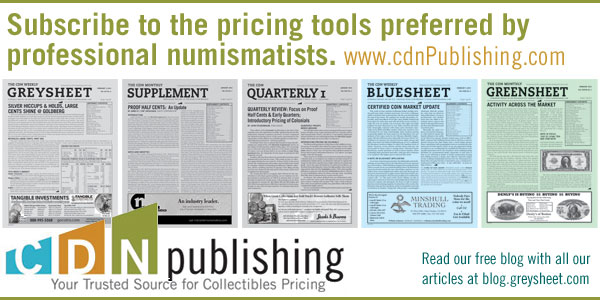
NEWMAN BIOGRAPHY ADDS TO PAN'S BURNS LIBRARY
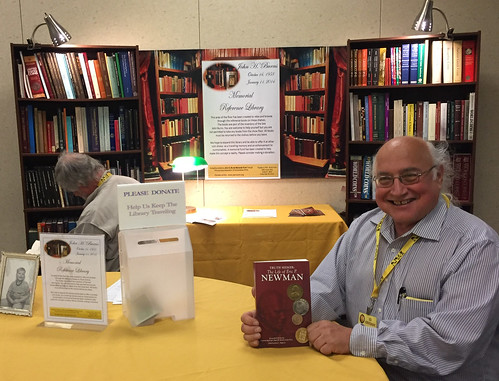
PAN board chairman Donald Carlucci made a Burns Library book donation at the PAN Spring Coin Show. Truth Seeker: The Life of Eric P. Newman is researched & Written by Leonard Augsburger, Roger W. Burdette & Joel Orosz and edited by James Halperin. Burns Library curator Ed Krivoniak holds the donated copy.
Heritage Capital Corporation description:
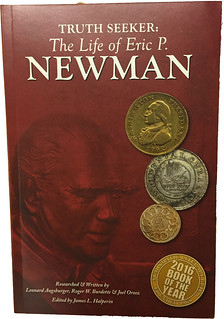 “Researched, written and edited by titans in the numismatic field, Truth Seeker: The Life of Eric P. Newman, is an expansive biography. The book comprises 400+ pages of
memorable stories suffused with fascinating illustrations and
documents, all chronicling the admirable life of Newman, now 104 years young.
“Researched, written and edited by titans in the numismatic field, Truth Seeker: The Life of Eric P. Newman, is an expansive biography. The book comprises 400+ pages of
memorable stories suffused with fascinating illustrations and
documents, all chronicling the admirable life of Newman, now 104 years young.
"In 43 chapters, Truth Seeker traces Newman's world-class collection from its inspiration - when his grandfather gave him an 1859 Indian head copper-nickel cent - to explaining the theory behind Newman's favorite coin. The history and content of his renowned and unparalleled collection, which he donated to charitable causes, would alone have been more than enough to fill the pages. Yet this work also profiles those who influenced him, both allies and adversaries, alongside the intellect, ethics, drive, and eternal optimism of a highly accomplished philanthropist who led his beloved hobby out of its own dark ages.”
To learn more about the Burns Library:
http://pancoins.org/john-burnsmemorial-reference-library/
LEON HENDRICKSON (1926-2017)
PNG Statement on Passing of Leon Hendrickson
“The Professional Numismatists Guild (www.PNGdealers.org) was saddened to learn of the passing of long-time member Leon Hendrickson of Winchester, Indiana. Hendrickson joined the PNG in 1970, served as the organization’s president from 1985 to 1989 and received the PNG Lifetime Achievement Award in 2003. He was one of the first members approved as a PNG Accredited Precious Metals Dealer when the PNG-APMD program (https://apmddealers.org) was created in 2015,” explained PNG Executive Director Robert Brueggeman.
“Leon was a giant in the profession and hobby. He was a good friend to so many collectors and dealers across the country. Our condolences to his family and friends,” said PNG President Dana Samuelson.
 Leon’s success led to a raised public profile. This proved good for business, but it also came at a cost. On July 25, 1973, two men drove a grey Cadillac from Chicago to Winchester with the aim of robbing SilverTowne and killing the owners. The murderous plot failed spectacularly, leaving one of the plotters dead from his injuries. Jan Chalfant’s biography of the Hendricksons, Rare Coins, Rare People (2011), describes the incident in great detail.
Leon’s success led to a raised public profile. This proved good for business, but it also came at a cost. On July 25, 1973, two men drove a grey Cadillac from Chicago to Winchester with the aim of robbing SilverTowne and killing the owners. The murderous plot failed spectacularly, leaving one of the plotters dead from his injuries. Jan Chalfant’s biography of the Hendricksons, Rare Coins, Rare People (2011), describes the incident in great detail.
As the Hendrickson family recouped from the incident, Leon’s attention returned to the acquisition and marketing of silver dollars. The LaVere Redfield and Continental Illinois Bank of Chicago Hoards of Morgan dollars kept public enthusiasm for the large cartwheel silver coin at a fever pitch, and SilverTowne remained one of the leading market makers.
When the Hunt Brothers drove up the cost of silver in 1979 and 1980, SilverTowne cashed in and used the capital to expand the business, building a new company building dubbed the “Mighty Fortress” in 1982. In 1985, they expanded operations by installing a smelting and custom minting operation into a second building.
Leon’s love for dollars culminated with his purchase of the “Dexter” 1804 dollar. He purchased the coin, which recently sold in the fifth session of the Pogue Sale, for $500,000 USD. He would sell it four years later for $990,000.
But while he owned the coin, Leon would take it to shows and share it with anyone who asked. He was a great ambassador for the hobby and its coins.
To read the complete article, see:
In Memoriam: Industry Icon Leon Hendrickson Passes Away at 90
(https://www.coinweek.com/people-in-the-news/memoriam-industry-icon-leon-hendrickson-passes-away-80/)
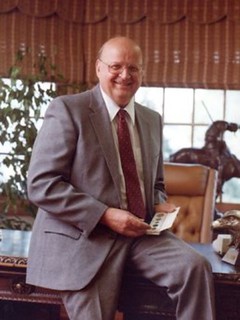 Leon E. Hendrickson (Lonnie), 90, passed away on Sunday, July 23, 2017, at the Summers Pointe Senior Living in Winchester, IN. Leon was born on October 5, 1926, in nearby Union City, IN, the son of Charles and Mary Hendrickson. He was a 1944 graduate of McKinley High School.
Leon E. Hendrickson (Lonnie), 90, passed away on Sunday, July 23, 2017, at the Summers Pointe Senior Living in Winchester, IN. Leon was born on October 5, 1926, in nearby Union City, IN, the son of Charles and Mary Hendrickson. He was a 1944 graduate of McKinley High School.
He was a dedicated father, grandfather and husband. He loved the Main Street Christian Church where he served as a Deacon and Elder over the years and he was named Elder Emeritus.. And he loved Silver Towne, the business he founded with his loving wife Ruhama (Hamie) and he treated all of his employees like family.
From humble beginnings as a farmer, Leon first joined the US navy at the age of 17 to fight in World War II aboard the USS Caldwell in the South Pacific. ON his first leave home he married Ruhama and quickly rejoined his ship to finish out the war.
After the ware he came home to Winchester and worked hard to raise his family. He was a farmer and substitute rural mail carrier. He also started several businesses such as a skating rink while working on the farm. He opened the famous Rainbow Restaurant in downtown Winchester which he ran 24 hours a day, 7 days a week for 20 years (while still farming). He also found time to serve on the local school board for 16 years and the board of directors of a local bank (which he later became the majority stockholder of).
Operating the Rainbow restaurant for 20 years he became fascinated with the hobby of coin collecting. He started a small coin shop above the Rainbow and then began showing his coins at local coin shows around the area. His hobby soon became a full-time profession. He moved the "Winchester Coin Shop" into the basement of his home and began doing business at some of the largest coin shows in the country. The Winchester Coin Shop soon became known as 'Silver Towne' as the business expanded into not only rare coins but also silver and gold bullions coins and bars. Leon became known as one of the leading experts in the hobby and profession of coin collecting as well as investing in silver and gold bullion. Silver Towne soon began manufacturing its own brand of pure silver bars which even today are widely sought after by investors nationwide.
Of course Leon's Silver Towne soon became too large for his basement. It now operates out of the beautiful 2 story building that he built next to his home and employs over 100 people.
"Make new friends but keep the old. One is silver the other gold."
To read the complete article, see:
Leon E. Hendrickson
(http://www.pal-item.com/story/life/announcements/obituaries/0001/01/01/leon-e-hendrickson/103950116/)
MINT DIRECTOR’S ACCOUNT BOOK, 1855-1868
Newman Portal Incorporates Mint Director’s Account Book, 1855-1868
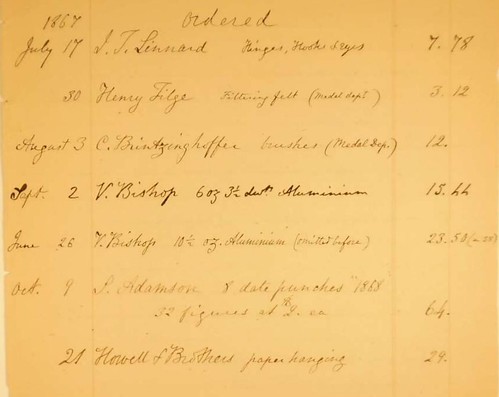
While many archival documents from the U.S. Mint reside in the National Archives, there are also discoveries to be made in institutional and private collections. Craig Sholley recently scanned and shared with Newman Portal a 19th century Mint document from the Fred Weinberg library.
“Simple Orders” is a 36-page document detailing miscellaneous charges approved by the Mint Director from 1855 to 1868. Some of the purchases represent daily necessities (charcoal, muslin, paper), while others open the door for more involved research. In March 1860, for example, the Mint purchased from J. J. C. Smith “the right to use his patent, for impressing dies in bell-metal.” Can an E-Sylum reader locate the patent?
One also see purchases for aluminum, a metal with which the Mint was experimenting in this era. In 1867, the Mint orders eight date punches for the year 1868 from S. Adamson – and multiple orders from Adamson suggest he may have been the sole source for date punches at this time.
Many thanks to Fred Weinberg and Craig Sholley for making this document available to the wider research community.
Link to “Simple Orders” on Newman Portal:
https://nnp.wustl.edu/library/book/533461
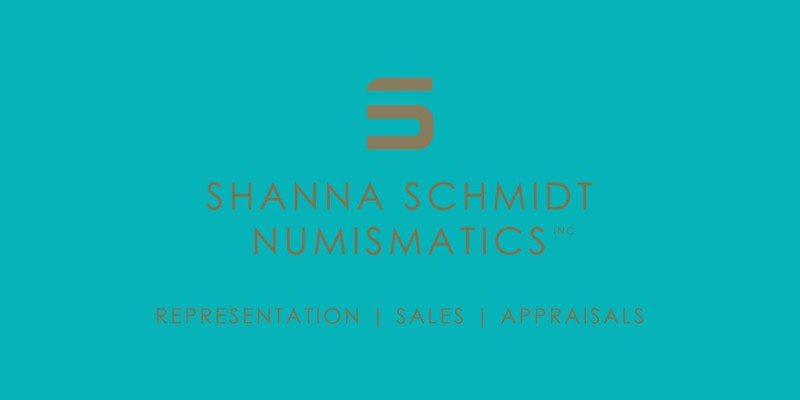
A LIST OF COIN FORUM WEB SITES
While we prioritize sites in English, other languages are welcome if the sites contain good information. Here's a listing of coin forum sites. Let me know what you think of these, and if there are any major sites you think are missing and ought to be included. -Editor
World of Coins
Numismatik Forum
Coin Community
Coin People
Coin Talk
CoinHelp! Coin Collecting Forum
Collectors Universe Message Boards
Error Coin Information Exchange
Canadian Paper Money
NGC Chat Boards
PCGS Message Boards
To visit the Newman Numismatic Portal, see:
https://nnp.wustl.edu/
To read the earlier E-Sylum article, see:
A LIST OF COIN BLOG WEB SITES
(http://www.coinbooks.org/v20/esylum_v20n30a28.html)
The Blind Coin Collector
TheCoinBlog.net
CDN Publishing Blog
U.S. MINT HUBBING DIES IN 1793
Hubbing Dies in the Earliest days of the United States Mint
Hubbing is the process
of creating multiple
dies that bear the same
elements. A hub is a
raised punch used to
impress a design into a die.
Though the terms
“punch” and “hub”
often are used interchangeably,
for the
purpose of this article
the difference between
them is a matter of
size. A punch is small
and features a single
letter, numeral, leaf or
other ornament; a hub
carries a larger device,
such as a head, wreath
or eagle, or even all
the images that appear
on one side of
a coin.
Hubbing is thought to
have begun in the United States
with the creation of obverse and
reverse dies for some Connecticut state coppers. The first
time the U.S. Mint used a hub
for the main device was believed
to have been in 1793 for
the Liberty Cap cents.
Since at least the late 19th
century, numismatists have remarked
on the artistic similar ities
between the 1792 disme pattern
and the 1793 half cent, suggesting
that they were executed by the same hand, namely Voigt’s.
Recently, I delved into this mystery.
Could the resemblance be
more than coincidental?
The main variance between the
dies (and probably the reason
nobody has noticed their exact
match) is the hair.
My findings show conclusively
that a single hub was used
for both the 1792 disme pattern
and 1793 half cent obverses.
Figure 3 shows how that hub
probably looked. Although the
hair was not defined, the approximate
shape of Liberty’s head can be determined.
The question remains: Why
would Voigt have prepared a
hub for the disme pattern in
1792? We can’t know for sure,
but the simplest explanation is
that he was experimenting.
Voigt must have known that the
hubbing process could produce
a number of nearly identical
dies and simply gave it a try.
Since he had successfully made
and used a hub, I wonder why
he reverted to hand- engraving
the Chain cent obverses. Of
course, I can only speculate, but
perhaps he was concerned that
a larger hub might not be effectual.
How ever, Voigt obviously
didn’t hesitate for long, as he
developed a hub for the Wreath
cent obverse within days of the
Chain cent minting and re-used
the leftover hub from the previous
year’s disme pattern for the
half cents.
In retrospect, Henry Voigt
deserves immense credit. Accepting
a temporary position
as the U.S. Mint’s chief coiner,
he experimented with hubbing
as early as 1792. He truly was a
remarkable and talented man,
without whom the mint might
not have succeeded.
For more information about the American Numismatic Association, see:
Whitman Publishing authors will meet and greet collectors and sign copies of their books at the Whitman booth, #200, at the American Numismatic Association World’s Fair of Money, August 1–5, 2017. The show is held at the Colorado Convention Center.
On Wednesday, August 2, is a special presentation, “An Hour With Ken and Dave,” featuring Kenneth Bressett and Q. David Bowers, and a raffle giveaway of a dozen Whitman books. Show visitors can meet Bressett (the longtime senior editor of the Red Book) and Bowers (the most prolific numismatic author of all time) from 2:00 to 3:00 p.m. The two will answer questions, chat about any hobby topic, autograph books, and pose for photographs. This was a very popular event at last year’s ANA show in Anaheim. “This is a rare opportunity to meet two of the hobby’s living legends,” said Whitman publisher Dennis Tucker. “Ken and Dave are also two of the friendliest people in numismatics, and they love to visit with collectors. Bring your camera, say hello, ask questions, and you’ll take home some wonderful memories from the ANA World’s Fair of Money.”
Bressett and Bowers will autograph books at other times throughout the show, as will other Whitman authors. The full schedule:
The Whitman Publishing booth is a popular gathering place for Whitman authors, so visitors have a good chance of running into other hobby writers at booth #200 throughout the week.
Because Whitman Publishing is the Official Supplier of the American Numismatic Association, ANA members get 10% off all purchases. Other show specials, bargains, and giveaways are scheduled for Whitman books, folders, albums, and hobby supplies.
Charles Davis
I will have Table 658.
Kolbe & Fanning
Although George and I will be attending from Wednesday to Friday (Saturday in his case), we will not have a table this year.
John Kraljevich
I'll be at Table 436 with a big pile of medals, highlights from the Augustin Dupre archive, and my usual array of oddball stuff.
CDN Collectors Price Guide
I'd like to share that CDN will be having an open seminar on Wednesday August 2nd at 11:30 AM in Room 505 to discuss our new Collectors Price Guide (CPG) with the public.
Symposium On The Allure Of Tokens And Medals
The Civil War Token Society (CWTS), Token and Medal Society (TAMS) and Medal Collectors of America (MCA) are hosting a Money Talks presentation on Thursday, 3:00 pm at the American Numismatic Association in Denver this August titled ASK THE EXPERTS! A SYMPOSIUM ON THE ALLURE OF TOKENS AND MEDALS. I'm moderating a panel featuring David Schenkman, Bill Hyder, Steve Hayden, Neil Musante and Q. David Bowers. We would love your readers to submit their questions for the event to me via email at susantrask@mindspring.com
For the full convention program, see:
To read the earlier E-Sylum article, see:
I’ve always liked the Lesher Dollars and was fortunate to purchase the Ostheimer Collection of Lesher Dollars over 15 years ago. Most of these rare medals have great pedigrees and two are plate coins in the first edition of the Hibler & Kappen So-Called Dollars book. The Ostheimer Specimen of the Boyd Park Lesher Dollar is graded NGC MS66 and is the highest graded example of any Lesher Dollar graded by PCGS or NGC.
Six collectors will be displaying their Lesher Dollar collections at Table 439 at the 2017 Denver ANA World’s Fair of Money. We will have all of the known Lesher Dollar Types and merchants together for the first time ever. Four of these Lesher Dollars are unique. The two top collections are included, one with three unique pieces and the other with one unique example. This is the first time ever that all of the known types and merchants are together.
We will have four cases with between 60-75 Lesher Dollars in total on display, along with associated numismatic literature and auction catalogs, space permitting. This should be the largest “gathering” of Lesher Dollars ever, or at least since 1900-01 when they were made!
In contrast, the 1952 A.N.A. Sale offered 54 examples of Lesher Dollars (Lots 2933 to 2986), probably the largest number offered in one place or sale to date. This was the collection of O. K. Rumbel of Mission, Texas. After Lot 2986 was opened and sold, the auctioneer opened the bidding at $100 over the sum of the prices realized for Lots 2933 to 2986, and “Suitcase Foster” took all the Lesher Dollars with him back to New York! A story for another day.
Even seeing one to three Lesher Dollars at a dealer or in an auction sale “is a lot.” The ANA will also have Adna Wilde’s Lesher Dollar Collection (that Adna donated to the ANA) on display in their showcase. This ANA you can see close to 100 examples of these rare medals at this year’s World’s Fair of Money!
For more information you can visit the Lesher Referendum Dollars website at
http://lesherdollars.com/ ,
PCGS CoinFacts Lesher Dollar website content at
http://www.pcgscoinfacts.com/Hierarchy.aspx?c=853
, and / or
the PCGS Lesher Dollar Registry at
https://www.pcgs.com/SetRegistry/private-issues-territorial-gold/territorial-private-issues/colorado-lesher-silver-dollars-1900-1901/alltimeset/9930 (this set will be part of our ANA display).
I will be close by at Table 435 if you have any questions. Thanks.
Christopher Marchase adds:
Be sure to visit the Lesher Dollar Display from Victor / Cripple Creek Colorado at table 439. This display will be the first time ever the newly NGC certified Henderson-Marchase collection of Lesher dollars will be presented for viewing. This collection consists 17 of 18 different Farran Zerbe varieties and 20 total examples. This collection is the most complete and valuable collection in existence.
To read the earlier E-Sylum article, see:
Julia Casey writes:
I enjoyed Robert R. Van Ryzin's article about the 1913 Liberty Nickel - a great read! I don't know much about the back research on these coins but I put a few keywords into Newspapers.com and came up with this 1920 reference.
Julia adds:
I found the same article in a different publication and this time dated 6 days earlier! This may help to better date the dinner which he says occurred "last night."
Bob Van Ryzin writes:
That is the correct address for Dunham per a 1920 issue of The Numismatist.
It looks like it could be a possibly mixed-up reference to Brown's nickel. The $600 figure certainly fits, as does "without a Buffalo".
Brown left his nickel at the convention on Aug. 22. The dinner was on Aug. 24 -- one day before one of the two newspaper articles. Dunham is listed as being at the banquet. Brown was not.
Nothing I've seen links Dunham to the nickel, and as Brown apparently asked for it to be sent back, as reported in the January 1921 issue of The Numismatist, I doubt Dunham owned it at that point.
My only guess would be that Brown had more than one there and sold one to Dunham? -- but that would be a really wild and unsupportable guess. There's no record of Dunham ever having one that I know of.
Mixed up or not, surely an intriguing find.
To read the earlier E-Sylum article, see:
A Wealth of New Numismatic Books
Two things sprang to mind while reading last week's E-Sylum.
Firstly, there is no better publication in numismatics, period, and that's not just idle prattle.
Secondly, how are we supposed to afford all those 'old books' we need when people keep writing new ones! Don't these authors realize that they're denting our bidding power at auctions! But, seriously, it is great to see so many new books being written on such a regular basis and having this forum to share them.
1986 Yale University Elizabethan Club Medal
The Elizabethan Club of Yale University 75th Anniversary Medal, 1986. Bronze, 79mm. diameter, 11mm. thick. By Joseph Reed. Obverse: Facing 3/4 figure of resplendent Queen Elizabeth incised and in relief. Reverse: Small and simple phoenix, and Elizabethan badge. Housed in a Paris Mint box with stand.
To read the earlier E-Sylum article, see:
Query: Ancient Coin Cereal Promotion?
To read the earlier E-Sylum article, see:
The George J. Verbeck I Gold 1900 Exposition Medal
My great-grandfather, George J. Verbeck I, was awarded a gold medal of the type illustrated for engraving at the 1900 Exposition. I am the current custodian of the medal, complete with the original brown or maroon leather box. Although a golden wash was applied, its composition is clearly silver, as indicated by the marking "ARGENT" on the edge. A great number of gold, silver, and bronze medals were awarded for excellence in a wide array of arts and industries. The artist is Jules-Clément Chaplain (1839-1909).
It may not be of general interest, but there's a rather atmospheric video of scenes from the event, including Edison's moving sidewalk.
To view the video, see:
To read the earlier E-Sylum article, see:
Neil deGrasse Tyson: Problem With American Currency
Here's a great short 7 min extract from 2014 which I stumbled on today on YouTube.
I was waiting for him to mention "In God we Trust" but that was not needed.
To read the earlier E-Sylum article, see:
Wikipedia As an Information Source
"... but in a day when I see Wikipedia, of all things, being cited as an authority,"
Arthur Shippee of Hamden, CT writes:
Wikipedia is pretty decent. Its articles are supposed to be well-sourced. My chief concern is more that it is boring rather than wrong. Used properly, it is a solid source.
To read the earlier E-Sylum article, see:
More on Token Issuer Robert Loder
According to the very interesting book Tokens of the Eighteenth Century Connected with Booksellers & Bookmakers (W. Longman, 1916), Loder’s grandson “found a box containing over one hundred of these tokens; the dies were also in his possession, so he had six specimen struck in silver, one of which, with the dies, he presented to the British Museum.”
To read the earlier E-Sylum article, see:
Ballantine Beer Spinner Token
In the last E-Sylum, you mentioned token coin spinners which were used to determine who would pay for drinks at a bar. Attached are scans of both sides of a Ballantine Beer Spinner. Ballantine Beer was founded in 1840 in Newark, NJ and was sold in 1972. The interesting part of the story is that I have two of these spinners and I have never been a beer drinker.
To read the earlier E-Sylum article, see:
Parachute Troops on OSS Medal Designs
In last week’s E-Sylum you mentioned, “I don't recall ever seeing a medal relating to parachute troops.”
In the June 21, 2017, Citizens Coinage Advisory Committee meeting at Mint headquarters in Washington, we reviewed a portfolio of design sketches for the upcoming Congressional Gold Medal for the Office of Strategic Services. The OSS was (to give a simplified definition) the predecessor to today’s CIA and other modern U.S. intelligence agencies. Several of the medal’s potential designs feature OSS operatives parachuting into occupied territory from a B-24 Liberator. This was an important means of secretly getting U.S. agents into operation during World War II.
To read the earlier E-Sylum article, see:
More on Coin-Embedded Lucite Toilet Seats
I have the coin-embedded Lucite toilet seats in the bathrooms in my house. In 2011 when I was the General Chairman for the ANA Convention held in Sacramento, I had a large reception at my house with nearly 50 numismatists attending. I was a little disappointed that not a single person commented on my toilet seats. Maybe they were having too much fun to take a bathroom break?
To read the earlier E-Sylum article, see:
Bison or Buffalo?
Dick asks:
"Is it Bison or Buffalo Nickel?"
Let's look at Morgan dollars, Indian Cents and Buffalo Nickels. These designs and denominations drive a huge amount of the overall numismatic marketplace with collectors numbering in the thousands. One visit to a coin show will reinforce this point as these coins are available from most dealers. The key date 1893-S Morgan has a mintage of 100,000 and is not a rare coin as 10-20 will be easily seen at the Denver ANA, maybe more. But walk the Denver ANA bourse and try to find key and semi-key date Liberty Seated coins in Very Fine through AU grades. This challenge will be substantial with only 2-3 speciality dealers being potential sources and the balance of the bourse being a long arduous search.
Where are all the quality Liberty Seated coins? Obviously, they are in collector hands. Let's examine that situation further based on my personal experience of building a 1600 piece Seated dime die variety reference set.
Collectors go through a learning process when engaging a new collecting objective. They dabble and buy some initial pieces to learn the series. Then come the books or other information sources followed by more purchases towards a collecting goal. With time, collectors transition from being novices to advanced collectors and upgrading takes place. The number of coins in the collection continues to increase. Duplicates begin to pile up with some hesitation on how to divest these coins without losing money against purchase prices. Collectors must also admit their early mistakes. Some collectors are so in love with their coins that it breaks their heart to contemplate selling their duplicates.
Key and semi-key date hoarding is yet another issue as certain individuals attempt to corner the market for certain dates and drive prices upward. Most individuals who attempt this strategy fail to recognize how to release their accumulations without impacting new higher pricing levels.
Conclusion? To enable the next generations of collectors, the marketplace must have a stable supply of quality coins. The larger the supply, the higher the confidence that a collector can select a Liberty Seated denomination and feel secure that a date and mintmark set can be completed in a reasonable amount of time. Collectors must remain active with their hobby else they will lose interest and move on to a "more collectible" series. If collectors take valuable time out of a business schedule to attend coin shows and walk away with few purchases, then their excitement for the hobby wanes.
To enable a vibrant marketplace for Liberty Seated coinage, advanced collectors should actively sell their duplicates to allow less experienced collectors to access and expand their own collections. The movement of quality duplicates from advanced to less experienced collectors is a critical process to ensure a healthy market and hobby. Advanced collectors should be thinking long term as to who will be available to purchase their prized collections when the time does come to divest. If advanced collectors starve the marketplace by holding back duplicates, then the available number of collectors to purchase their high grade specimens has been limited. It is in the best interest of advanced collectors to nurture the formation of a healthy collector base to absorb their high end collections when the time comes.
These are my thoughts on a Tuesday morning. What say you on this topic? Please email your comments and feedback for inclusion into a forthcoming edition of the Daily Blog.
To read the complete article, see:
A coin and money convention, including an auction for rare currency, will hit Denver’s Colorado Convention Center Aug. 1-5.
The World’s Fair of Money, sponsored by the Colorado Springs-based American Numismatic association, will host more than $1 billion of valuable currency.
The general public can view the rare coins and bills, including examples of currency with some sort of mistake, known as “funny money,” and learn about the history of coins through educational seminars.
The auction will feature a 1792 Birch cent, the first penny manufactured in the U.S. It contains 264 grains of copper because the government wanted it to be worth exactly 1/100 of a dollar – but it made it about the size of a half dollar. The coins were never circulated.
Heritage Auctions, the organization selling the piece for an English coin collector who found it, sold another Birch cent a few years ago for nearly $2.6 million. David Stone, a U.S. coin cataloger for Heritage Auctions, said he expects this one to go for only $500,000 because it is not in as good of condition.
Stone said it is unknown how many of these first pennies were manufactured, but about a dozen are known to exist today. The one at the Denver auction was last seen in 1890 but recently turned up in England with a coin dealer.
“We thought we knew where it was before, but we were wrong,” Stone said. “This one was hidden for all those years.”
Other notable coins at the auction will be experimental pennies made from plastic, glass or zinc-covered steel – prototypes to show to Congress for consideration during World War II when they were short on copper due to the manufacturing of shell casings and other war necessities. One of these experimental coins sold for $70,000 last year, Stone said.
To read the complete article, see:
Recoinage.
Melting one class of coins and using the metal to fabricate a new class of coins, or to retire the metal from the old class and issue new coins in a different composition. In a way, recoinage goes on constantly as old, worn coins are withdrawn from circulation, and melted for the metal these contain. However some notable recoinages have taken place in history. In 1696 the Tower Mint in London could not produce a new silver coinage fast enough to replace existing coins, so country mints (Bristol, Chester, Exeter, Norwich and York) – under control of Sir Issac Newton – were called upon to aid in striking the new coins. As it was, it required two years to complete the recoinage.
During the silver shortage in England from 1790-1815 the Bank of England accumulated a supply of Spanish silver eight reales coins for emergency use. To make them acceptable to circulate in England they were sent to Matthew Boulton to be overstruck at his foundry in Soho where dies were made with an appropriate design and the inscription BANK OF ENGLAND 1804. In many cases these five-shilling pieces show traces of the old Spanish coins as the UNDERTYPE
In more modern times extensive recoinage has occurred twice in the 20th century. In 1920 Great Britain effectively went off the sterling standard, cutting the silver content of their coins in half, replacing silver coins with a quaternary coinage (of silver, copper, nickel, zinc). In 1947 Great Britain replace even that coinage with an all cupro-nickel coinage. Major economic factors, as the rising price of coin alloys, cause drastic changes in coin compositions, necessitating recoinages. Smaller countries usually follow the actions of major countries.
For a brief time during recoinage, both coins circulate simultaneously. In the 20th century, machines were developed to separate out the old coins until only the new coins remain in circulation. The separation can be done by several ways; often, however, mechanical or magnetic separation cannot be used, so electric resistivity is used to distinguish between the two compositions. These separating machines are usually developed by the vending machine industry because of their experience with detecting good coins from bad in their machines.
For the last two weeks we revealed the meaning of the word CLASS and a number at the end of every term as the outline of all terms in An Encyclopedia of Coin and Medal Technology. There are 14 such classes and 86 sub-classes. This week we list the second half of these sub-classes (the first half appeared last week).
08 -- Metalworking, Heat Treating, Trimming, Chasing
Terms of hand working and machine metalworking,
heat treating, other metalworking terms
08.1 Metalworking
09 -- Finish, Finishing, Plating, Patinas
Terms of all the steps of the finishing
department including enamelling, plating,
patinas, lacquering
09.1 Finish & Finishing
10 -- Edge Lettering, Inscribing, Mounting, Packaging
After the piece has been formed and finished,
includes all edge lettering and numbering, any
inscribing, mounting & packaging
10.2 Edge Lettering & Numbering
11 -- Cataloging, Describing, Curating, Preservation
Terms of numismatic cataloging and describing,
and by curators for conservation, preservation
and archiving
11.1 Art History
12 -- Mints, Medal Manufacturing & Issuing
Terms of mints, minting, medal manufacturing,
issuing and medal types. . . . . . 109 Terms
12.2 Mints and Minting
13 -- Collecting and Collectors' Terms
The collecting avocation and terms in common
use by coin and medal collectors
14 -- Not Elsewhere Classified
All other terms
To read the earlier E-Sylum article, see:
William Carlos Stone (1859-1939), was born on October 8, 1859 at Plymouth, Massachusetts, son of Admiral Samuel Paschal Stone (1820-1902), Assistant Superintendent of Schools, and Elizabeth M. Hutchinson Stone (1835-1899), both natives of New Hampshire. His great-grandfather Urial Stone was a soldier in the American Revolution in Corporal Bedel's New Hampshire Regiment.
While still a youth at Plymouth he was given a gift of foreign postage stamps from Hong Kong and East India from the wife of a sea captain which sparked his fascination with collecting postage stamps. He began buying collectible postage stamps while a youth of twelve years at Plymouth in 1871. The first stamp he purchased was a 15c 1869 U. S. stamp for which he paid one cent to a schoolmate. He thought it a waste of money at the time. By 1893 he amassed a collection of approximately 14,000 postage stamps. His specialty in coin collecting is war medals and decorations including three different crosses of the Legion of Honor, the German Iron Cross of 1813, the Russian Cross of St. George, the French Order of Saint Esprit, the Bourbon Order of the Lily, etc.
In 1873, his family moved to Springfield, Massachusetts where he remained his remaining years. He graduated Springfield public high school in 1878. From 1879-1883 he assisted his father as superintendent of schools working in his office.
In 1883 he worked as an assistant librarian in the Springfield Public Library, where he remained until 1938.
Stone was a founding member of the American Philatelic Association, established on September 14, 1886 in New York City. He was appointed Librarian in 1887, but was transferred to the Literary Board, and since 1890 as Chairman. The Association was later renamed the American Philatelic Society. Stone served as President 1905-1907 succeeding Hiram Edmund Deats. He was also editor of the American Philatelist beginning in 1893. He also served on the Hand-Book Committee of the APA (now APS). He was also a member of the Post Card Society, and the I.P.V. of Dresden.
He worked for 55 years as assistant librarian at the Springfield, Massachusetts Public Library. He also served as the A.N.A. Librarian from 1892-1898.
He joined the American Numismatic Association in 1892 and is A.N.A. Member No. 92. He served as Vice-President of the A.N.A.
On June 28, 1893, he married Annie Ripley Osgood of Fryeburg, Maine, at Springfield, Massachusetts. They had two daughters Helen (1894-), and Emily (1896-).
On May 9, 1912, he was a founding charter member and the first president of the Springfield Coin Club.
Lyman Haynes Low auctioned part of his coin collection on May 22, 1918, originally scheduled April 20, 1918.
He died at his home in Springfield, Massachusetts, on February 23, 1939.
His philatelic library was sold posthumously in April 1941 and purchased by George Townsend Turner (1906-1979). Turner eventually donated it to the Smithsonian Institute's Postal History Museum.
In 1940, the APS established the William Carlos Stone Memorial Award for exhibitors at annual convention.
In 1947, he was inducted in the American Philatelic Society Hall of Fame.
To read the complete article, see:
It took over 16 years to build the Josiah K. Lilly Collection into a world class collection. After Josiah K. Lilly’s death in 1966, Paul Rawley, Trust Officer at the Merchants National Bank in Indianapolis was given the long and difficult job of getting all of the Lilly collections inventoried and appraised. Mr. Rawley took a personal and direct interest in making sure the collections were distributed as directed.
As noted earlier, Dr. and Mrs. Clain-Stefanelli had examined the Lilly Collection and believed that such an extensive, quality collection should not be broken up. They worked to get the coins from the collection preserved as part of the National Numismatic Collection at the Smithsonian Institution. He approached the chiefs and top executives at the Smithsonian and, at the suggestion of Paul Rawley, he also went to the congressmen and senators from Indiana. They agreed with the recommendations from Dr. and Mrs. Stefanelli and they said they would permit proposal of a Bill before Congress to acquire the Lilly Collection for the National Coin Collection. But, of course, they wanted to see the result of the collection’s appraisal.
The list of individual coins in the J.K. Lilly gold collection was appraised at $4.5 million. This may not seem like much in the 21st century, but the value of gold in 1966 was about $35 per ounce, thus the base value without any numismatic premium was much lower than it would be today. This was especially important for the more common coins. Additionally, at the time the demand for the major rarities was not as great as it is today.
However, the appraisers increased the value of the entire collection to $5.5 million based on its vast size and completeness. Such a collection would be so difficult to duplicate that its value was more than the sum of its parts.
The valuation was approved by the executor and later by the I.R.S. Then the bill for the acquisition of the Lilly Gold Coin Collection was set forth. It was done in an unusual way, so that it would benefit the estate, while giving the Smithsonian this world class collection.
The bill provided first for the removal of the collection from the estate's assets, as if it had been given before J.K. Lilly's death. The bill also provided for a tax credit of the appraised amount. These benefits reflected that the collection was a unique opportunity to enhance the National Numismatic Collection with incredible coins in the United States, Ancient and Foreign series.
To read the complete article, see:
To read the earlier E-Sylum article, see:
I want to thank you for listing Stack's Bowers blog among
the listing you provided.
I started to write Blogs for Stack's and later Stack's Bowers
about a decade ago. Dave Bowers started his 'blogging' for
Stack' s and Stack's Bowers earlier. I began my writings upon
the urging of some good numismatic friends and dealers, who
always enjoyed when I could relate stories about my friendship with old timer collector and dealer, with handling Very Rare Coins, telling about building collections with collectors whom I was able to bond with more closely because I could relate a story or pedigree about coins they were interested in.
Upon urging I started to write "HARVEY REMEMBERS"for
our Stack's Bowers Newsletter.which attracted a goodly
number of readers, and also invoke questions, along with
the additional information that any of them had, which
help strengthen my knowledge. It has always bee a great
"give and take"
Having met and dealt with so many old time collectors who
were active a half a century ago or more, I was able to be
aware for those who welcomed pedigrees as part of their
collecting ways, and stimulated collecting by knowing where
certain great coins came from, who owned them earlier,
and how they assembled their collections and what these
known pedigrees added to the value to them to be in their
collection.
So I started to write firstly about collectors, and then told stories as to how we dealt with people in our over the counter store in Midtown New York City. I told of people who came to us to add to their collections as well as those who sold to us. I told about how exciting our coin shows were. Who we met and who we served. I entered the numismatic hobby as a Professional Numismatist after being part of a important firm for years before while still getting my education.
I was indeed lucky to be brought up in an environment that taught me as I apprenticed, and let me become a leader in our field. I always listened to the elder numismatists who offered me more knowledge about collecting than one could get anywhere else.
Now I am working on a blog which details my early days in Numismatics, my attachment to our shop in New York, (considered a collectors Club House by those who came to visit) , my relations with my partners which includes my father, my uncle, my two cousins who were my uncle's sons,
and the addition to our partnership of my son, who after college in 1973 became a full time Numismatist, following his family's way of being part of the Numismatic World.
The E-Sylum is a vehicle which expounds Tradition, the History and Lore that Numismatics gives to those who thrive on studying and collecting. May you continue your offering of wonderful information.
To read the earlier E-Sylum article, see:
Saul Teichman writes:
John Pack, Dave Bowers and I are wondering if the Esylumites can help us with regard to how many of the Chormann patterns exist.
Examples were sold in the Ford sale and also a Heritage sale
We are trying to determine if anyone knows how many different designs/denominations/compositions exist for these.
Any help the E-Sylum crew could provide would be greatly appreciated
The following is supplied courtesy of John Pack with some additions by Saul Teichman.
The following 6 designs were produced by Philadelphia engraver and die sinker, E.G. Chormann. These pieces were produced in 1861 for the United States Government as part of ongoing experiments into how to prevent “abrasion, counterfeiting, and deterioration of the coins of the United States,” in the words of the commissioners appointed to examine the proposal on behalf of the United States. The genesis of this program of experimentation was a joint resolution of Congress, February 26, 1857, “to prevent the counterfeiting of the coins of the United States,” which authorized the formal investigation of the proposals given by one Dr. J.T. Barclay. Appointed as commissioners were Professors Henry Vethake and R.E. Rogers, who reported to Vice President John C. Breckinridge, as President of the Senate. E.G. Chormann was hired as the engraver, while a veteran mechanic of the U.S. Mint at Philadelphia, David Gilbert, was hired as the machinist for the project.
Mr. Chormann writes to Mr. James F. Hieskell, May 19, 1860:
“Being conversant with the plans proposed by Dr. J.T. Barclay for the improvement of the coinage, (having been engaged in the recent experiments connected therewith,) I will agree to engrave all the dies (for the facial and peripheral devices) that may be required for the production of a specimen coin, for the sum of twenty-five hundred dollars ($2,500.) I will guaranty the same to be in accordance with recent experiment, embracing Dr. J.T. Barclay’s method of improving the coinage of the United States.
Respectfully, your obedient servant,
E.G. Chormann”
These items will appear in a future edition of Judd in appendix C.
JC1861-1
The following cent sized pattern shows a scallop design on both sides with the date 1861 in the center on one side.
So far, it is only confirmed in copper and/or brass with 4 examples sold in Heritage 8/06 sale.
Photo courtesy of Heritage.
JC1861-4
This is the first of 3 quarter sized pieces. It shows an Indian head similar to that on the regular cent and a shield inside a scallop with engine turning in it.
Examples of this are known as follows:
Silver JC1861-4 with an example, ex Ford, sold in StacksBowers 8/13 sale.
White Metal or Lead JC1861-5 with an example sold in Heritage 8/06 sale.
Photo courtesy of StacksBowers.
JC1861-9
This is the 2nd of 3 quarter sized designs. It shares the same obverse as JC1861-4 combined with a different reverse. This reverse is similar to the other but the inner shield which has F in the center of the shield surrounded by Chormann and Phila instead of lines.
So far it is only confirmed in white metal and/or lead with an example, ex Ford, sold in the StacksBowers 8/13 sales and another in Heritage 8/06 sale.
Note: We are saving JC1861-8 for a silver example should it exist.
Photo courtesy of StacksBowers
JC1861-12
The following is the third known quarter sized piece. It is a muling of the 2 reverses used on JC1861-4 and JC1861-9 and is known only in silver. The illustrated piece is the former Ford, StacksBowers 8/13 example.
JC1861-13 has been saved for a white metal and/or lead example, should it exist.
Photo courtesy of StacksBowers.
JC1861-17
The following is the first of 2 known half dollar sized designs. This one employees a seated Liberty design similar to the regular circulation piece inside a scallop design with a reverse showing an eagle, again similar to the regular design inside a scallop design with Chormann F below the eagle.
So far this is only known in white metal and/or lead with at least 2 known, one ex Ford, StacksBowers 8/13 sale and another ex Heritage 8/06 sale.
We have saved JC1861-16 should a silver example ever turn up.
Photo courtesy of StacksBowers.
JC1861-21
The following is the second of 2 known half dollar sized designs. This one employees the same seated Liberty design similar as on JC1861-17 but with a reverse showing the eagle in a cartouche.
So far this is only known in white metal and/or lead with at least 2 known, both ex Ford, StacksBowers 8/13.
We have saved JC1861-20 for a silver example should it ever turn up.
Photo courtesy of StacksBowers.
To read the complete article, see:
Despite the historical distinction, a Wright State environmental history professor called the era an ugly chapter of Georgia’s past.
Like the better-known gold rushes in California and Alaska, the Georgia gold rush has been romanticized, shaped by the myth of Appalachian “exceptionalism,” said Drew Swanson, who holds a University of Georgia doctorate.
But it wreaked enormous environmental damage in the north Georgia mountains many people think of as pristine, explained Swanson in a recent talk.
The centerpiece of the exhibit is a collection of 62 gold coins — an example of every gold coin produced from 1829 to 1861 by a federal mint operating in Dahlonega. The mint only produced gold coins in denominations from $1 to $5.
The Thomas Leverette McMullan Reed Creek Collection of Dahlonega Mint Coins is one of only a few complete collections, although a handful of people in Athens and Oconee County also own sets. John and Marilyn McMullan recently donated the collection, valued at about $715,000, according to one estimate.
In addition to the coins, the exhibit features gold nuggets, postcards, historic maps, and even a couple of old movies.
The Civil War put a temporary halt to most Georgia gold mining, but it resumed afterward, bigger and even more environmentally destructive, he said. Gold production peaked circa 1900, then faded in the wake of new discoveries in Alaska, Australia and other places, he said.
One more speaker is scheduled in connection with the exhibit, which runs through Dec. 5 in the Russell Building. UGA history professor Stephen Mihm is scheduled to speak Sept. 21 on “A Nation of Counterfeiters: Capitalists, Con Men and the Making of the United States.”
To read the complete article, see:
To read the earlier E=Sylum article, see:
1500 AD Silk Trade Token
Description: 1500 AD SILK TRADE TOKEN
To read the complete lot description, see:
1646 Newark Siege Nine Shillings
A ninepence coin minted in Newark when the town was under siege has sold at auction for £1,600.
The silver diamond-shaped civil war coin went under the hammer at a specialist currency auction yesterday (Wednesday, July 26) at Tennants Auction House in Leyburn, North Yorkshire.
Tennants spokesman said the lot was one of the most interesting coins in the sale.
He said: "This rare, diamond-shaped coin was minted in Newark under the reign of Charles I.
"Newark was a site of strategic importance to both Royalists and Parliamentarians during the Civil War, as two major roads – the Great North Road, and the Fosse Way – ran through the town.
To read the complete article, see:
Ceylon Plantation Tokens
Ceylon, Plantation tokens, Pilo Fernando, Slave Island, Colombo, 4 1/2d, 2 1/4d (Pr. 33, 34). (2).
To read the complete lot description, see:
1922 Banque De Paris Medal
France - silver medal - Bank of Paris and the Netherlands - 50th anniversary 1872 - 1922.
Medal weighs 195 grams and is equipped with a mark in the edge: silver.
Magnificent image.
Medal has a nice patina.
To read the complete lot description, see:
Regarding the note on "the original sculpt for the penny",
Dave Lange writes:
I'm attaching images from my Lincoln Cent book that were obtained from the Philadelphia Mint many years ago. As can be seen, these are similar to but not identical to the coin in its final version. I don't know whether the Mint has actual galvanos of the coin as issued.
Dick Johnson writes:
An item in last week’s E-Sylum is untrue. The plaster model of Brenner’s Lincoln Cent is NOT in Medallic Art’s vault. The original plaster is in the vault of the Philadelphia Mint where it has been since 1909 and has been out of the building on only on two occasions, for exhibits in 1910 and 1971.
The item appearing on the firm’s home page may have been written by a well intentioned – but misinformed – employee. There are two possible sources for the information he misunderstood. The most plausible is the fact that Victor Brenner hired Henri Weil, later president of Medallic Art, to make galvanos from his plaster models of the Lincoln cent before these were sent to the Mint. Both plaster and galvano are in the Mint’s vault.
No copy was kept by Medallic Art. No copy was placed in the archives of dies and patterns of the company.
The second possibility is the Lincoln Plaque by Brenner. It’s portrait of Lincoln is similar to the Lincoln of the cent. It is in MACO’s vault. It was modeled and cast in 1907 two years before the cent model was created. The Lincoln Plaque is shown in the drawing of Brenner meeting with Theodore Roosevelt by Joel Iskowitz. Roosevelt was instrumental in having American coins designed by sculptors outside the Mint.
To read the earlier E-Sylum article, see:
A hoard of Roman coins dating back to the 3rd Century has gone on public display for the first time.
Metal detector enthusiasts unearthed 1,608 coins in a field in Boldre, near Lymington in Hampshire, in 2014.
They are being displayed at the town's recently renovated St Barbe Museum and Art Gallery, which raised £30,000 to stop the collection from being split up.
Crowds gathered to see the unveiling of the treasure when the museum reopened on Saturday following an upgrade paid for with a £1.78m Heritage Lottery Fund grant.
BBC presenter Dan Snow had backed the appeal to make the coins a "centrepiece" at the museum.
Metal detectorist James Petts, who discovered the so-called Boldre Hoard, said: "It's the icing on the cake if you're a detectorist. It's what we all dream of and want to find.
"It's been a great experience. I'm glad it is all preserved for future generations."
To read the complete article, see:
The government and Treasury of the Falkland Islands have issued (11th July) a new crown coin which remembers the 35th anniversary of the day the islands were officially and wholly liberated from invading forces of the Argentinian Army. The long-running dispute between Britain and Argentina over the ownership of the Falkland Islands was brought to a head on the 19th March 1982, when 50 Argentinians landed on South Georgia Island and hoisted their flag. Under the order of Leopoldo Galtieri, president of Argentina and head of the military junta in charge, the invasion of the Falkland Islands was declared on 2nd April, triggering the start of the war.
The island’s representative of the Crown and commander in chief, Sir Rex Hunt, was forced to beat a hasty retreat away from Stanley, the administrative capital of the Falklands and surrounding islands. Before being forced to leave the island by the invading forces, Sir Rex put on his full ceremonial uniform, complete with plumed hat, and marched off to meet the enemy at Stanley town hall, where he warned them with these words:
"You have landed unlawfully on British territory and I order you to remove yourself and your troops forthwith."
Sir Rex was removed from the islands by Argentinian forces and flew home to the United Kingdom from the Uruguayan capital of Montevideo. The British government, then led by Margaret Thatcher, responded to this attack by sending a large task force to recapture the islands. This force included a member of the British royal family, Prince Andrew, who personally fought in the battle. The campaign launched by Margaret Thatcher—which probably initiated her nickname of the “Iron Lady”—was one of the most memorable events in post–World War II British history.
The British forces operated 8,000 miles from home and in terrible conditions. Almost 1,000 people lost their lives during the 74-day conflict, but the war was brought to an end on 14th June with the surrender of Argentina and the announcement of Britain as the victor. Sir Rex—knighted in October 1982—returned to the South Atlantic after the British military’s June victory. In 1985, the final year of his posting, a new Falklands constitution reinstated and consolidated the position of governor. He retired from his post altogether that same year.
Many veterans and next of kin of those who paid the ultimate price for liberating the islands have visited over the past 35 years. The Falklands Liberation Memorial, a beautiful tribute to our lost soldiers, was erected on the Falkland Islands at the junction of Ross Road and Reservoir Road in Stanley. The monument was funded entirely by Falkland Islanders and was even designed by a Falklands-born architect, Gerald Dixon. The bronze figure of Britannia was sculpted by David Norris and was unveiled on Liberation Day 1984.
To read the complete article, see:
Captain Ronald Keith Gordon of The Gordon Highlanders was awarded the Military Cross for his conspicuous gallantry and devotion to duty.
During the last months of World War 1, Gordon – who lived from 1895 to 1933 – led his company against a railway embankment over nearly a mile of exposed ground and under fire.
Captain RK Gordon served in the 3rd Reserve and then in the 1st Gordons during the First World War.
His brother, Captain Kenneth Speirs Gordon MC, who lived from 1894 to 1934 and was also a Gordon Highlander, earned the award for bravery in July 1916 for his duty at The Battle of the Somme.
Nearly 100 years after it was presented to Captain Ronald Keith Gordon, the medal and documents are now at the Gordon Highlanders Museum, which currently holds a number of the other 258 Military Crosses.
The Military Crosses were instituted on December 31, 1914, and were awarded to captains, officers and those in other ranks.
The Friends of the Gordon Highlanders Museum financed the purchase of the World War 1 medal and letter for the museum’s collection.
To read the complete article, see:
“I learned the true story of Paddy from my late father when I was little and I’ve never forgotten it,” she explained. “I call to see that the memorial is in good shape every now and again.”
I love the story of Paddy the Pigeon from Carnlough, too. He was decorated for bravery, awarded the Dickin Medal — the animal equivalent of the Victoria Cross — after helping the Allies win the Second World War in his own feathery way.
Seven years ago Paddy was remembered with a race in his honour from St Mallow in France to Co Antrim lofts.
It was a long-distance flypast celebrating the little bird’s original achievement, flying from the dangerous Normandy beachhead to a safe haven in Hampshire a few days after D-Day in 1944 with vital information about German gun emplacements.
The Dickin Medal has been awarded only 63 times since it was introduced in the blackout days of 1943 and Paddy’s gong, which is now in the hands of a private collector, is valued at around £10,000.
Paddy’s flight from the battlefield took four hours and 50 minutes those 73 years ago. His early training was at Ballykelly RAF base from where he took part in air-sea rescue dramas.
Paddy, originally from the Moyleen loft of the late Carnlough fancier Andrew Hughes who presented him to the National Pigeon Service to be trained for military duty, never flew on another wartime mission.
His code name was U2 and Paddy the pigeon was the only Irish animal of any kind to be decorated for bravery with a Dickin Medal, which had been introduced by animal lover Maria Dickin and granted official approval by Churchill and American commander Dwight Eisenhower.
To read the complete article, see:
But now police in Berlin say they may have finally recovered the solid Queen Elizabeth II coin - in the shape of a melted-down gold bar.
The coin, which was worth an estimated £3.3million and weighed 221lbs, was stolen from the Bode Museum in Berlin on 27 March.
One of the suspects is believed to be a former museum supervisor, and the others were linked to another Arab clan suspected of being involved with other thefts.
To read the complete articles, see:
To read the earlier E-Sylum articles, see:
Now, the striker has his face on currency after being represented on the 1,000 kroner note by a Swedish artist.
The former Manchester United, Barcelona and Juventus striker seemed impressed with the piece, made by photographer Bingo Rimer.
Ibrahimovic posed with a blown up version of the note on Instagram, captioned 'You have Benjamin Franklin and you have me' referring to the statesman whose likeness adorns the $100 note in the US.
Unfortunately for his fans, the note is not official Swedish currency and is not available - meaning you cannot make a payment with a wad of Zlatans.
Rimer posted further pictures of his art to social media, including a large canvas of the note, featuring a head shot of Zlatan with a smaller version of the player celebrating a goal.
To read the complete article, see:
While Boy Scout Troops from across the nation have participated in community service projects across southern West Virginia, it was a West Virginia Troop that uncovered what appeared to be buried treasure Tuesday morning in Wyoming County.
Thirty-one Boy Scouts from the Huntington area, along with two more Scouts from Colorado, unearthed a large wooden box while constructing a foot bridge in Guyandotte Park, near Wyoming County East High School.
“We're rich! We're rich!” the Scouts chanted as four boys pulled their discovery from the ground.
Wrapped in a deteriorating cloth, there was a key to unlock the large weathered box. However, in the excitement and with Scouts pushing in to get a closer look, the key was lost in the dirt.
The lock was broken with the nearby digging tools to reveal pearls, colorful beads, jewelry, tarnishing metals, campaign buttons from the early 1900s, along with old coins and paper money.
With one Scout commanding all the items be placed back onto a rug where the new found wealth was laid out, the onlookers were much too curious to follow the instructions.
Some of the Scouts, however, doubted the authenticity of the discovery, wondering about the age of the items included in the weathered box and the gluey remains of a vanished sticker on the bottom of a small statue.
A faded letter instructed the "finders to keep" the treasure and Dewey Houck, president of Rural Appalachian Improvement League (RAIL), said as far as he is concerned, that is exactly what will happen.
“The letter said it belonged to the finders,” Houck said.
“They found it; they should take it with them as far as I'm concerned.”
As to who buried the treasure, or when it was placed in the ground, or from where the loot could have come may be a mystery that is never solved.
To read the complete article, see:
To read the complete article, see:
Dear Expert,
Wondering in Washington
Available only from us:
This is a higher grade than any other rare company can offer! Other certification services
offer no coins at all above MS-70.
Each coin is guaranteed to be made at the Philadelphia, Denver, or San Francisco Mint.
We guarantee that there will be no West Point coins, doubled dies, or striking errors.
Each bag contains 1,000 pennies, as counted by our row of uniformed guards on our
production line (with security vaults in the background). Wait! There’s more! As a bonus
every bag will also include five (5) Jefferson nickels guaranteed to have been minted since
1937!
Your cost is just $49.95 per bag! (Plus just $10 shipping)
Strict limit of 10 bags per buyer per day; offer expires December 31, 2019. Each bag
comes with a numbered certificate of authenticity.
This offer is limited only to buyers who can qualify on these points:
• 1. You must have a zip code starting with a number from 0 to 9. Anyone without a zip code
cannot place an order. This is a very strict rule; sorry, no exceptions.
• 2. Our toll-free operators are available only from 12:01 a.m. until 11:55 p.m. each day,
except April 1. Positively no orders can be placed from 11:55 p.m. to 12 midnight, or on April 1.
• 3. Payment must be made in cash or by credit card. In addition, American Gold Eagles are
accepted at the spot price for bullion, less 10% service and handling.
Disclaimer: SCAM is an independent company. We are not affiliated with the government or any numismatic
association. Thus, we can give more liberal investments than would be possible under regulation. With us the sky’s
the limit! We do not reveal our clients’ names to any agency or authority. Only you will know of your private
reserve!
The prices of collectible coins can vary depending upon the economic climate, the weather, the strength of the
aftermarket (if there is one), and other factors. Accordingly, neither SCAM nor any other company can guarantee
profits. We do mention that there are some pennies such as 1793 that sell for thousands of dollars.

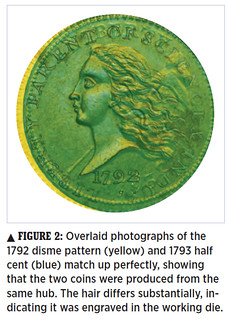 By overlaying the designs in
Adobe Photoshop®, I determined
that the disme and halfcent
obverses were, in fact, created
from the same hub. Figure 1
shows the obverses side-by-side.
The similarities between the
faces are obvious, but the treatment
of the hair differs greatly.
Figure 2 shows an overlay of the
two coins. (The disme is rendered
in yellow, and the half cent
is reproduced in blue.) It is obvious
that the two faces match
perfectly, including the eyes,
noses, lips, cheeks, foreheads,
chins, necks and shapes of the
bust lines.
By overlaying the designs in
Adobe Photoshop®, I determined
that the disme and halfcent
obverses were, in fact, created
from the same hub. Figure 1
shows the obverses side-by-side.
The similarities between the
faces are obvious, but the treatment
of the hair differs greatly.
Figure 2 shows an overlay of the
two coins. (The disme is rendered
in yellow, and the half cent
is reproduced in blue.) It is obvious
that the two faces match
perfectly, including the eyes,
noses, lips, cheeks, foreheads,
chins, necks and shapes of the
bust lines.
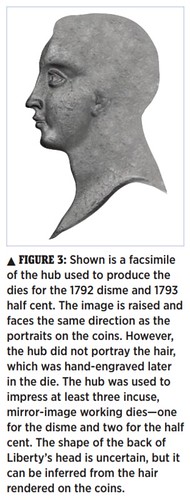 My findings show conclusively
that a single hub was used
for both the 1792 disme pattern
and 1793 half cent obverses.
Figure 3 shows how that hub
probably looked. Although the
hair was not defined, the approximate
shape of Liberty’s
head can be determined.
My findings show conclusively
that a single hub was used
for both the 1792 disme pattern
and 1793 half cent obverses.
Figure 3 shows how that hub
probably looked. Although the
hair was not defined, the approximate
shape of Liberty’s
head can be determined.
https://www.money.org/
MEET WHITMAN AUTHORS AT THE 2017 DENVER ANA
at the 2017 ANA World’s Fair of Money in Denver
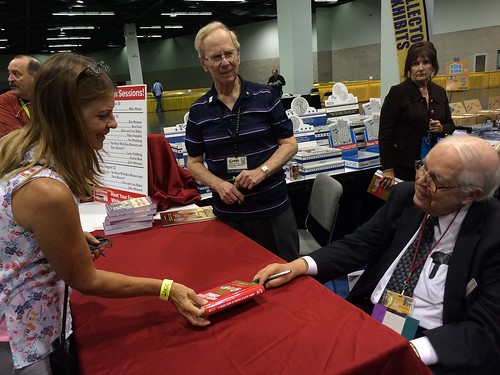
Ken Bressett and Dave Bowers

MORE 2017 DENVER ANA CONVENTION EVENTS
Charlie Davis writes:
David Fanning writes:
John Kraljevich writes:
Patrick Perez of Coin Dealer Newsletter writes:
As a reminder, Susan Trask wrote (in our May 28, 2017 issue):
2017 Denver Show Guide
(http://onlinedigitalpublishing.com/publication/?i=421749#{"issue_id":421749,"page":0})
2017 DENVER ANA CONVENTION EVENTS
(http://www.coinbooks.org/v20/esylum_v20n30a14.html)
LESHER DOLLAR COLLECTION EXHIBIT
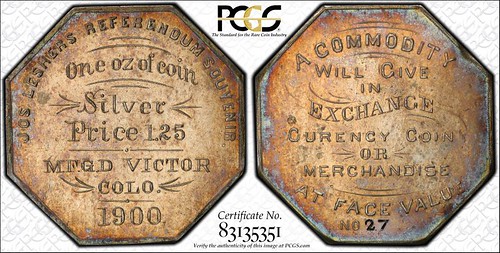

BOOK REVIEW: FORGOTTEN COLORADO SILVER
(http://www.coinbooks.org/v20/esylum_v20n29a05.html)
DUNHAM'S 1913 LIBERTY NICKEL?
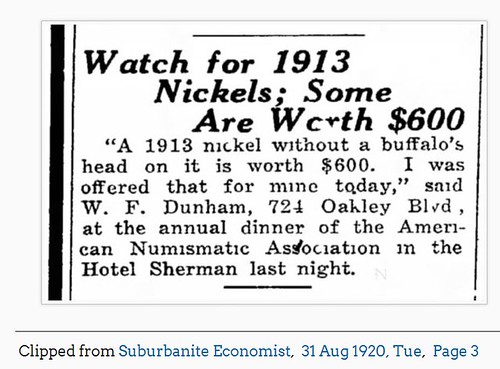
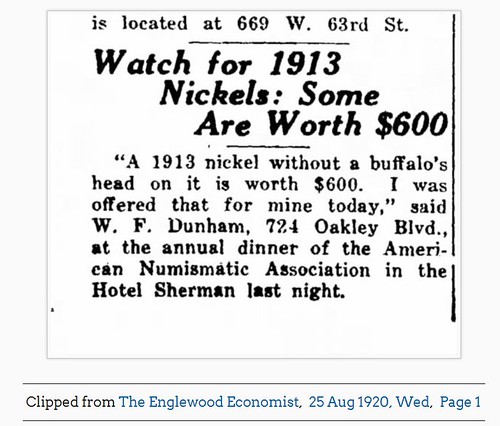
1913 LIBERTY NICKEL FIRST SEEN IN 1919
(http://www.coinbooks.org/v20/esylum_v20n30a10.html)

NOTES FROM E-SYLUM READERS: JULY 30, 2017
Darryl Atchison from near Cork City, Ireland writes:

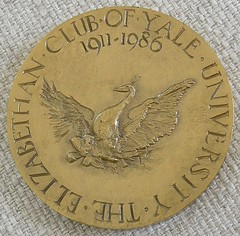
YALE UNIVERSITY ELIZABETHAN CLUB MEDAL
(http://www.coinbooks.org/v20/esylum_v20n30a34.html)
Last week readers attributed the ancient coin Phil Hoover found. He writes:
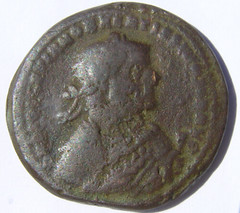 I have been told by one of the members of our detecting club that one possibility of its origin lies in a promotion that a cereal company did, supposedly back when movies like Ben Hur were popular and Roman history was in the public eye. You could send in x amount of box tops and in return you would receive a Roman coin. Is that the truth? Don't know. That member claims to have found several roman coins over the years in and around Seattle. My girlfriend found her own Roman coin about two years ago, so there may be some truth to why such coins are being found in the area. At any rate, thanks for the help in identifying this (and even better that my coin is older than hers! lol)
I have been told by one of the members of our detecting club that one possibility of its origin lies in a promotion that a cereal company did, supposedly back when movies like Ben Hur were popular and Roman history was in the public eye. You could send in x amount of box tops and in return you would receive a Roman coin. Is that the truth? Don't know. That member claims to have found several roman coins over the years in and around Seattle. My girlfriend found her own Roman coin about two years ago, so there may be some truth to why such coins are being found in the area. At any rate, thanks for the help in identifying this (and even better that my coin is older than hers! lol)
MYSTERY COIN: DIOCLETIAN ABDICATION NUMMUS
(http://www.coinbooks.org/v20/esylum_v20n30a11.html)
Mark Verbeck writes:
Paris in 1900 - Exposition Universelle [Rare Footage]
(https://www.youtube.com/watch?v=n-4R72jTb74)
NUMISMATIC NUGGETS: JULY 23, 2017 : 1900 Exposition Universelle Medal
(http://www.coinbooks.org/v20/esylum_v20n30a26.html)
Kavan Ratnatunga of Sri Lanka writes:
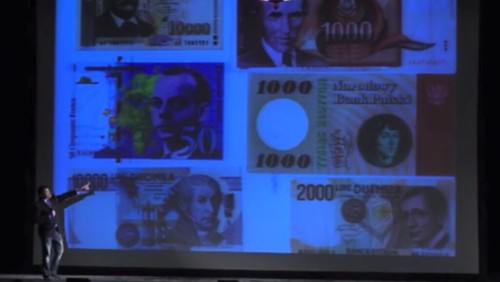
Neil deGrasse Tyson Describes One Problem With American Currency...
(https://www.youtube.com/watch?v=An9Y9gzari0&feature=youtu.be)
Last week Bob Leonard wrote:
NOTES FROM E-SYLUM READERS: JULY 23, 2017 : Critical Thinking About Internet Sources
(http://www.coinbooks.org/v20/esylum_v20n30a12.html)
Joe Esposito writes:
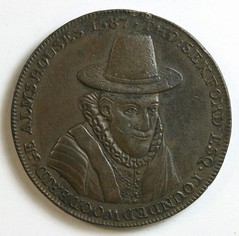 The article last week on the Conder token highlighting alms, D & H Suffolk 15, is interesting. Robert Loder, the bookseller responsible for the token, was also a local historian. One of his books was Ordinaces, etc., for Seckford’s Almshouses in Woodbridge (1792), which discusses Thomas Seckford’s extensive charity work in the sixteenth century (He is identified on the token as “Sekford”). Presumably Loder was promoting his book. The Latin inscription on the reverse of the token translated means: “Prayers and alms reigns in the presence of God.”
The article last week on the Conder token highlighting alms, D & H Suffolk 15, is interesting. Robert Loder, the bookseller responsible for the token, was also a local historian. One of his books was Ordinaces, etc., for Seckford’s Almshouses in Woodbridge (1792), which discusses Thomas Seckford’s extensive charity work in the sixteenth century (He is identified on the token as “Sekford”). Presumably Loder was promoting his book. The Latin inscription on the reverse of the token translated means: “Prayers and alms reigns in the presence of God.”
NUMISMATIC NUGGETS: JULY 23, 2017 : 1796 Woodbrodge Alms House Penny Token
(http://www.coinbooks.org/v20/esylum_v20n30a26.html)
Ken Berger writes:
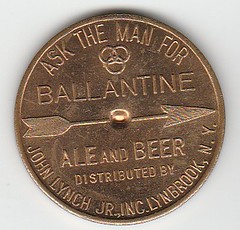
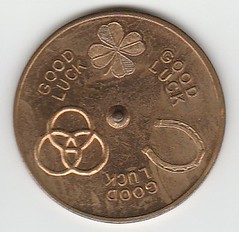
NOTES FROM E-SYLUM READERS: JULY 23, 2017 :
Lincoln Cent Fidget Spinner
(http://www.coinbooks.org/v20/esylum_v20n30a12.html)
Dennis Tucker writes:
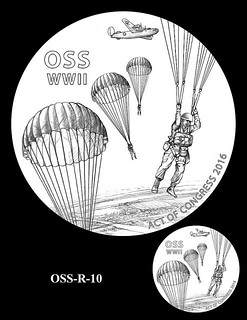
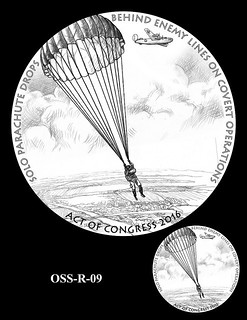
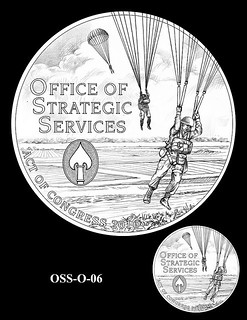
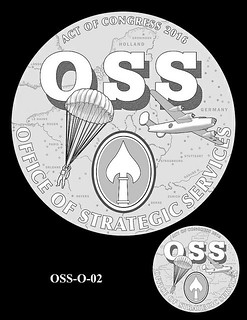
NUMISMATIC NUGGETS: JULY 23, 2017 : Parachute Troops Medal
(http://www.coinbooks.org/v20/esylum_v20n30a26.html)
Jeff Shevlin writes:
NOTES FROM E-SYLUM READERS: JULY 23, 2017 : More on Coin-Embedded Lucite Toilet Seats
(http://www.coinbooks.org/v20/esylum_v20n30a12.html)
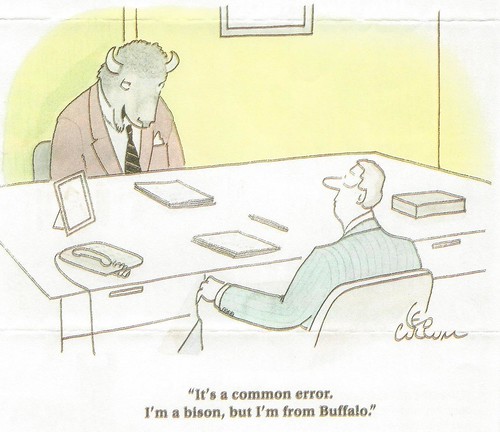
SELL YOUR DUPLICATES, GROW THE HOBBY
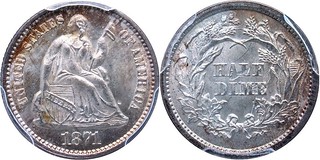 While enjoying a health walk on Sunday, I pondered the present marketplace for Liberty Seated coins and the potential impact on growing Liberty Seated Collector Club membership levels. LSCC membership has been consistently at 650 for the past several years. Though the LSCC leadership team continues outreach efforts, the club size remains constant. Why? One of the reasons, I surmised, is the limited availability of quality Seated coins in the marketplace. There are more Liberty Seated collectors striving to build quality sets than there are surviving examples to populate those sets. This fact that Liberty Seated coinage supply is limiting the size of the collector community became evident during the past several months.
While enjoying a health walk on Sunday, I pondered the present marketplace for Liberty Seated coins and the potential impact on growing Liberty Seated Collector Club membership levels. LSCC membership has been consistently at 650 for the past several years. Though the LSCC leadership team continues outreach efforts, the club size remains constant. Why? One of the reasons, I surmised, is the limited availability of quality Seated coins in the marketplace. There are more Liberty Seated collectors striving to build quality sets than there are surviving examples to populate those sets. This fact that Liberty Seated coinage supply is limiting the size of the collector community became evident during the past several months.
 This thought process leads me to believe that Liberty Seated coinage supply must increase to enable a growth in the number of collectors of individual series. The issue is most acute for Seated quarters, halves and dollars with half dimes still attempting to garner respect and Seated dimes date and mintmarks being in a reasonable demand and supply balance. Die varieties are a completely different story for Seated dimes as popularity continues to increase.
This thought process leads me to believe that Liberty Seated coinage supply must increase to enable a growth in the number of collectors of individual series. The issue is most acute for Seated quarters, halves and dollars with half dimes still attempting to garner respect and Seated dimes date and mintmarks being in a reasonable demand and supply balance. Die varieties are a completely different story for Seated dimes as popularity continues to increase.
 Die variety collecting further exacerbates the market supply situation as die variety collectors may own 5-10 or more quality examples of a certain date. This takes a substantial toll on the available supply.
Die variety collecting further exacerbates the market supply situation as die variety collectors may own 5-10 or more quality examples of a certain date. This takes a substantial toll on the available supply.
Enabling a Broader Collecting Community: The Case for Selling Liberty Seated Coinage Duplicates
(http://www.seateddimevarieties.com/DailyBlog.htm)

LOCAL COVERAGE OF 2017 DENVER ANA CONVENTION
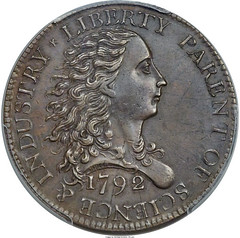 The price of history is half a million dollars, and you can buy it next week in Denver.
The price of history is half a million dollars, and you can buy it next week in Denver.
Show me the money – $1 billion of rare coins in Denver next week for convention
(http://www.denverpost.com/2017/07/27/1-billion-rare-coins-denver-convention/)
VOCABULARY TERM: RECOINAGE
CLASS 05.1
Reference: CH23 {1954} Stride, p 16.
08.3 Heat Treating
08.5 Trimming, Piercing
08.7 Loop Forming
08.8 Chasing
08.9 Metalworking & Heat Treating Anomalies
09.2 Toning & Tarnish
09.3 Corrosion, Cleaning & Refinishing
09.4 Buffing & Polishing
09.5 Fabricating
09.6 Enamelling & Fill-ins
09.7 Firegilding, Plating, Electroplating
09.8 Patinas
09.9 Finishing Anomalies
10.4 Inscribing & Hallmarking
10.6 Mounting & Suspension
10.8 Inspection, Packaging & Cases
10.9 Cut, Counterstamped & Graffiti
11.2 Attribution & Authentication
11.3 Cataloging Mechanics
11.4 Cataloging & Descriptive Terms
11.5 Condition
11.6 Curating & Exhibiting
11.7 Preservation
11.8 Measurements & Weights
11.9 Copies, Replicas & Fakes
12.4 Medal Manufacturing & Publishing
12.6 Medal Types
13.1 Coin & Medal Collecting
13.3 Collectors' Terms
VOCABULARY TERM: TABLE MEDAL
(http://www.coinbooks.org/v20/esylum_v20n30a16.html)
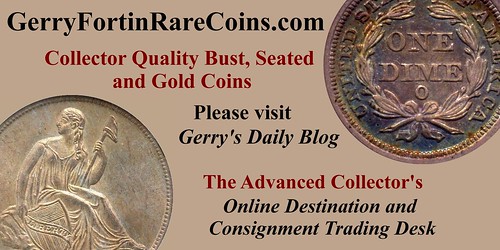
WILLIAM CARLOS STONE (1859-1939)
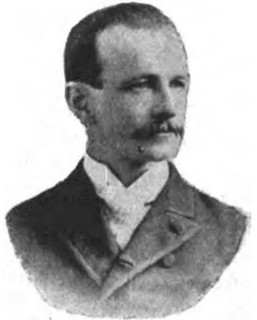 Stone was a specialist in Chinese stamps, and United States revenue stamps and amassed an extensive philatelic literature library, now in the Postal History Museum, Washington, D.C. He assisted William Reynolds Ricketts in the preparation the index of philatelic literature. He was a specialist in Greek, Roman and U. S. Coins, and collected Napoleon medals, and served as the Librarian and Vice-President of the American Numismatic Association.
Stone was a specialist in Chinese stamps, and United States revenue stamps and amassed an extensive philatelic literature library, now in the Postal History Museum, Washington, D.C. He assisted William Reynolds Ricketts in the preparation the index of philatelic literature. He was a specialist in Greek, Roman and U. S. Coins, and collected Napoleon medals, and served as the Librarian and Vice-President of the American Numismatic Association.
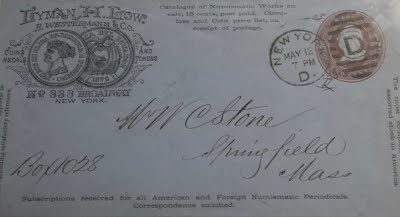
STONE, WILLIAM CARLOS
(https://sites.google.com/a/numismaticmall.com/www/numismaticmall-com/stone-william-carlos)
DONATING THE JOSIAH K. LILLY COLLECTION
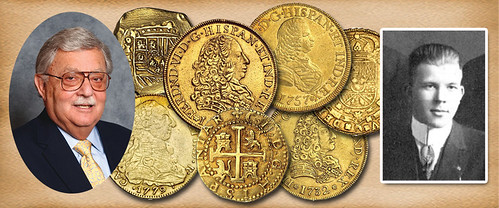
Building a World Class Numismatic Gold Coin Collection The Josiah K. Lilly Collection Part 32
(http://www.stacksbowers.com/News/Pages/Blogs.aspx?ArticleID=2621)
DISPOSING OF THE LILLY COLLECTION
(http://www.coinbooks.org/v20/esylum_v20n29a17.html)
HARVEY STACK ON BLOGGING NUMISMATIC HISTORY
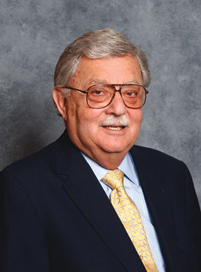 My copy of The E-Sylum arrived late last Sunday night and I spent time reading many of the articles and learning some new things. That is the fun of being a Numismatist.
My copy of The E-Sylum arrived late last Sunday night and I spent time reading many of the articles and learning some new things. That is the fun of being a Numismatist.
A LIST OF COIN BLOG WEB SITES
(http://www.coinbooks.org/v20/esylum_v20n30a28.html)
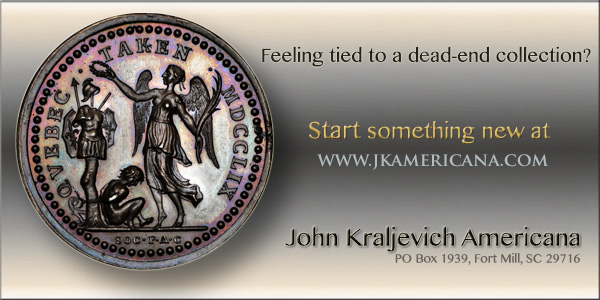
QUERY: CHORMANN PATTERN INFORMATION SOUGHT
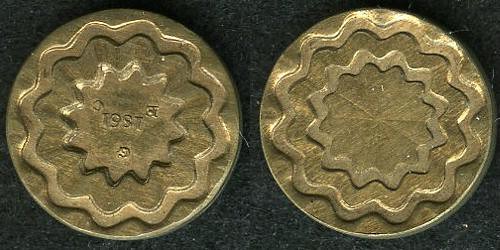
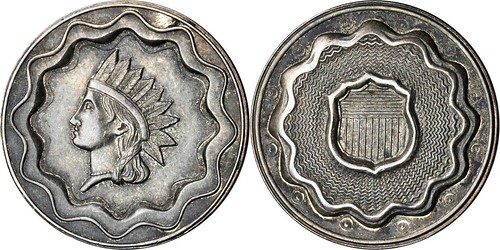
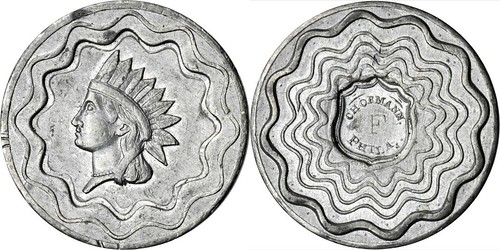
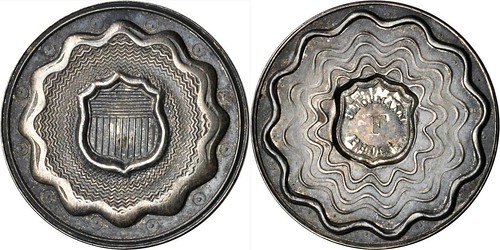
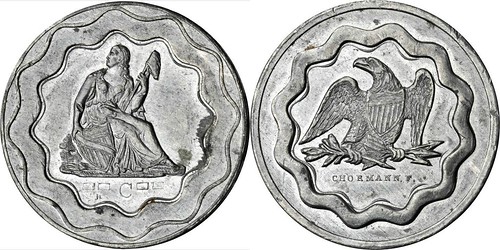
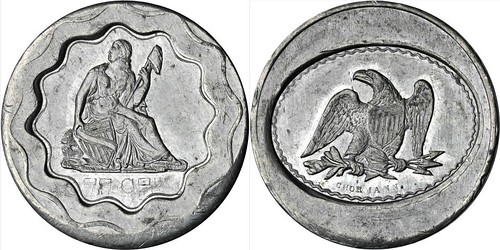
Chormann Patterns
(http://uspatterns.stores.yahoo.net/chpa.html)
MORE ON AMERICA'S FIRST GOLD RUSH EXHIBIT
 Few know that one of the nation’s first gold rushes took place in Georgia during the first half of the 19th century.
Few know that one of the nation’s first gold rushes took place in Georgia during the first half of the 19th century.
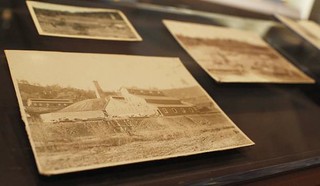 It was also an underlying reason for the forced eviction of Cherokee Indians and the Trail of Tears, Swanson recently told a packed auditorium in UGA’s Russell Libraries Building, where librarians with the Hargrett Rare Books and Manuscripts Library have mounted an exhibit on Georgia’s gold rush.
It was also an underlying reason for the forced eviction of Cherokee Indians and the Trail of Tears, Swanson recently told a packed auditorium in UGA’s Russell Libraries Building, where librarians with the Hargrett Rare Books and Manuscripts Library have mounted an exhibit on Georgia’s gold rush.
UGA library exhibits items from Georgia gold rush
(http://onlineathens.com/local-news/2017-07-27/uga-library-exhibits-items-georgia-gold-rush)
EXHIBIT: GEORGIA - AMERICA'S FIRST GOLD RUSH
(http://www.coinbooks.org/v20/esylum_v20n30a32.html)
NUMISMATIC NUGGETS: JULY 30, 2017
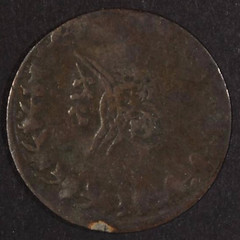

Lot 224: 1500 AD SILK TRADE TOKEN
(https://www.invaluable.com/auction-lot/-1-c-F354A69817)
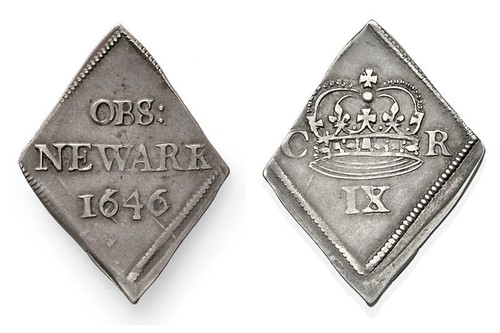
Ninepence coin minted in Newark sells at auction for £1,600
(http://www.nottinghampost.com/news/local-news/ninepence-coin-minted-newark-sells-246013)
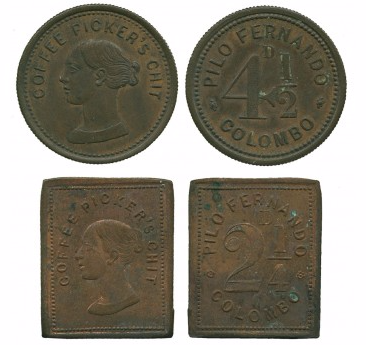
Ceylon, Plantation Tokens, Pilo Fernando
(http://www.baldwin.co.uk/ceylon-plantation-tokens-pilo-fernando.html)
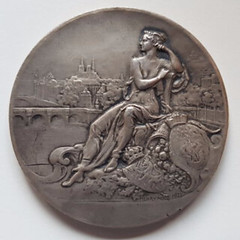
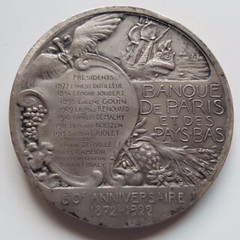
France - Medal ''Banque De Paris et des Pays-Bas (Paribas) 50e Anniversaire 1872-1922' ('Bank of Paris and the Netherlands' (Paribas's) 50th Anniversary 1872 - 1922') by Henry Nocq – Silver
(https://auction.catawiki.com/kavels/12916879-france-medal-banque-de-paris-et-des-pays-bas-paribas-50e-anniversaire-1872-1922-bank-of-paris-and-the-netherlands-paribas-s-50th-anniversary-1872-1922-by-henry-nocq-silver)

LINCOLN CENT SCULPT NOT IN MEDALLIC ART'S VAULT
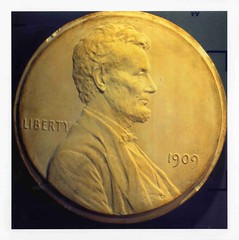 Your piece about Medallic Art Company holding the original models for the Lincoln Cent prompted me to go to its website, but there don't appear to be any images of said models. Brenner produced so many versions of his medals and plaques from this project that it's really hard to say that any piece is the "original."
Your piece about Medallic Art Company holding the original models for the Lincoln Cent prompted me to go to its website, but there don't appear to be any images of said models. Brenner produced so many versions of his medals and plaques from this project that it's really hard to say that any piece is the "original."
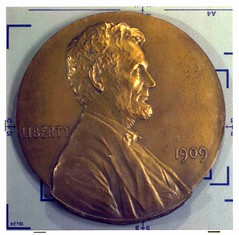

Brenner Lincoln Cent Galvanos
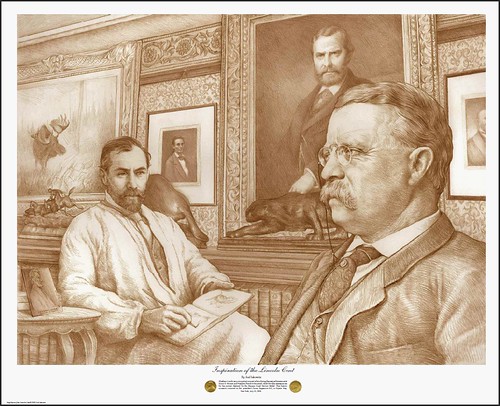
NOTES FROM E-SYLUM READERS: JULY 23, 2017 : The Original Sculpt for the Lincoln Cent
(http://www.coinbooks.org/v20/esylum_v20n30a12.html)
ROMAN BOLDRE HOARD GOES ON DISPLAY
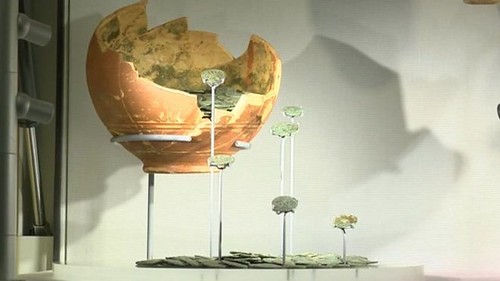
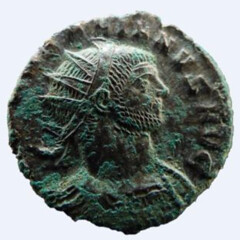 Some experts had wanted some of coins to be kept at London's British Museum.
Some experts had wanted some of coins to be kept at London's British Museum.
Roman Boldre Hoard goes on display at St Barbe Museum
(http://www.bbc.com/news/uk-england-hampshire-40768334)
2017 FALKLAND ISLANDS LIBERATION CROWN

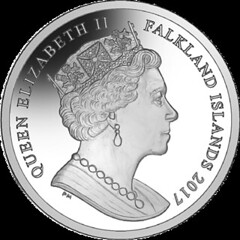
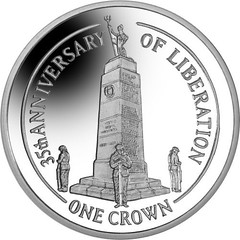
Falkland Islands: Liberation is remembered with new silver crown coin
(http://news.coinupdate.com/falkland-islands-liberation-is-remembered-with-new-silver-crown-coin/)
ABERDEEN MUSEUM DISPLAYS MILITARY CROSS MEDAL
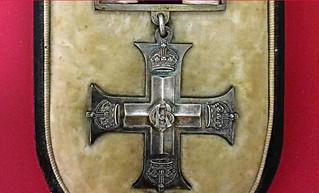 An Aberdeen museum has acquired a rare medal and letter awarded to a World War 1 hero.
An Aberdeen museum has acquired a rare medal and letter awarded to a World War 1 hero.
WORLD WAR 1 HERO’S MEDAL ADDED TO GORDON HIGHLANDERS MUSEUM COLLECTION
(https://www.eveningexpress.co.uk/fp/news/local/world-war-1-heros-medal-added-gordon-highlanders-museum-collection/)
DICKIN MEDAL WINNER PADDY THE PIGEON
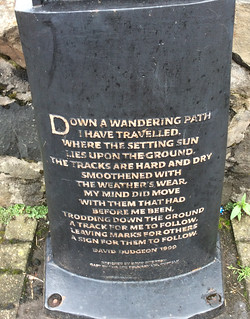 A mystery lady has resurrected my interest in Paddy the Second World War hero pigeon. She stepped out of a car by the harbour wall in Carnlough, armed with a duster and a tin of Brasso, and gave Paddy’s memorial plaque there a brisk clean-up. Then she produced her camera and took a couple of pictures of the now glittering plaque.
A mystery lady has resurrected my interest in Paddy the Second World War hero pigeon. She stepped out of a car by the harbour wall in Carnlough, armed with a duster and a tin of Brasso, and gave Paddy’s memorial plaque there a brisk clean-up. Then she produced her camera and took a couple of pictures of the now glittering plaque.
Dusting off memories of Carnlough hero pigeon
(http://www.belfasttelegraph.co.uk/archive/dusting-off-memories-of-carnlough-hero-pigeon-35974636.html)
BIG MAPLE LEAF BELIEVED MELTED
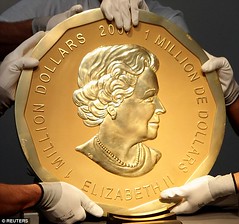 It was labeled one of the spectacular heists in Germany's history.
It was labeled one of the spectacular heists in Germany's history.
Solid gold coin worth £3.3 MILLION that was snatched in audacious Berlin museum heist has been found ‘melted down’ and turned into a gold bar
(http://www.dailymail.co.uk/news/article-4740068/Solid-gold-coin-worth-3-3-MILLION-melted-down.html)
Stolen £3.3m solid gold Queen Elizabeth II coin 'found melted down' after 'Lebanese mafia' arrests
(http://www.mirror.co.uk/news/world-news/stolen-33m-solid-gold-queen-10888907)
GIANT GOLD MAPLE LEAF COIN STOLEN
(http://www.coinbooks.org/v20/esylum_v20n14a11.html)
POLICE RELEASE VIDEO OF BIG MAPLE LEAF THIEVES
(http://www.coinbooks.org/v20/esylum_v20n28a14.html)
ARRESTS MADE IN THEFT OF BIG MAPLE LEAF
(http://www.coinbooks.org/v20/esylum_v20n29a08.html)
SWEDEN'S STAR FOOTBALLER NOW ON "BANKNOTE"
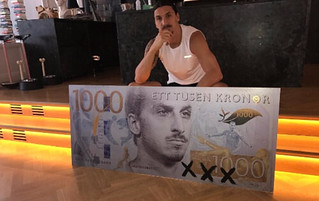 It is barely overstating the matter to say Zlatan Ibrahimovic has attained living legend status in Sweden - he is the country's top scorer and is being immortalised in a statue outside the national stadium.
It is barely overstating the matter to say Zlatan Ibrahimovic has attained living legend status in Sweden - he is the country's top scorer and is being immortalised in a statue outside the national stadium.
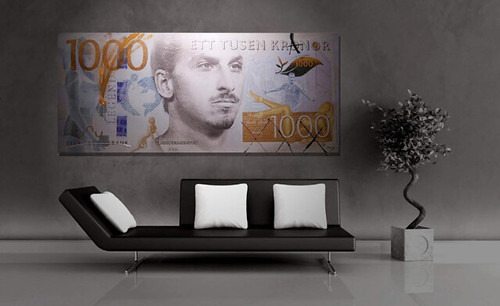
Zlatan Ibrahimovic on the money again as Swedish striker is immortalised on 1,000 kroner note
(http://www.dailymail.co.uk/sport/football/article-4731846/Zlatan-Ibrahimovic-painted-version-1-000-kroner-note.html)
BOY SCOUTS UNEARTH BURIED TREASURE

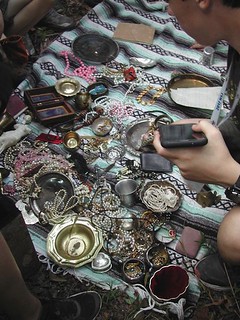 Afterward, pandemonium ensued with Scouts and local volunteers wanting to get a closer look at the discovery.
Afterward, pandemonium ensued with Scouts and local volunteers wanting to get a closer look at the discovery.
Boy Scouts unearth 'buried treasure' in Wyoming County
(http://www.register-herald.com/news/boy-scouts-unearth-buried-treasure-in-wyoming-county/article_ddeeed89-f534-5cc5-82a0-18c6aa023e5d.html)
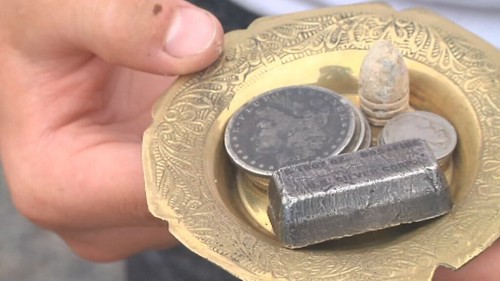
Local scouts find 'buried treasure' on community service project
(http://wchstv.com/news/local/local-scouts-find-buried-treasure-on-community-service-project)
WINDOW OF OPPORTUNITY: LINCOLN CENT DEAL
Perhaps you can help me. I am interested in rare coins and the tremendous profits they offer.
I recently saw this advertisement. Do you think I should mortgage my house and make an
investment?
Security Coin Advisory Marketing (SCAM) offers this limited opportunity.
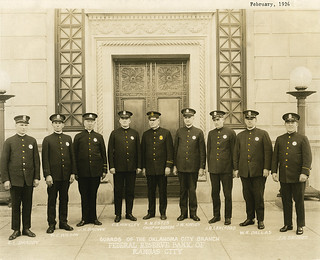 Vault Bags of Lincoln Pennies guaranteed to have either the Lincoln Memorial or a
Shield on the reverse. We assure you that there are no wheat reverse coins; guaranteed.
Every coin is certified as MS-71 by Certified Rarities Authentication Professionals (CRAP). No messy plastic holders to deal with or to store as the entire bag is certified at once, with certification in ink directly on the outside canvas by the signatures of two guards, another innovation!
Vault Bags of Lincoln Pennies guaranteed to have either the Lincoln Memorial or a
Shield on the reverse. We assure you that there are no wheat reverse coins; guaranteed.
Every coin is certified as MS-71 by Certified Rarities Authentication Professionals (CRAP). No messy plastic holders to deal with or to store as the entire bag is certified at once, with certification in ink directly on the outside canvas by the signatures of two guards, another innovation!

